#bodhisattva business
Text
Sorry study partners, but I do not see the attraction of Zhang Zhe. If you want to spend hours staring at a beautiful, unmoving, uncompromising embodiment of virtue you can hang out with the bodhisattvas at the temple. Marriage to that guy will be an absolute snoozefest; you'll never see him because he's busy working unpaid overtime. He will spend exactly five minutes in your bed once a fortnight until you're pregnant, possibly less if it looks like you're enjoying yourself. He doesn't have the money to buy you jewellery and wouldn't even if he did. He will never call you pretty because evaluating the merit of something on its surface appearance is meaningless. He won't even approve of you having an affair no matter how discreet you were about it. Your only hobbies will be balancing the frankly dire household budget, mending your one nice outfit for the umpteenth time, and going slowly insane.
Anyway, great character, very compelling, completely unfuckable. 10/10, do not marry.
#story of kunning palace#cdrama#he's so virtuous it's basically a personality disorder i stan#but he is at about a minus 1000 for potential to fuck nasty about it#according to my assessment of him to the end of ep 12
95 notes
·
View notes
Note
Imagine what would happen if, somehow, Wukong could meet his mother? And I don't mean in the way that Guanyin is both the reincarnation of his mother and his adopted mother, I mean if he could meet the actual version of her who laid his egg? What would she think of him?
Ok I got a little carried away and made a wee ficlet/idea for how this could happen;
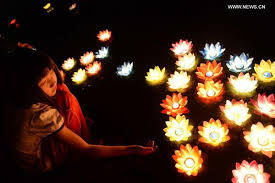
--
It was the Qingming Festival - a time for the living to focus on the departed and tend to their resting places.
Pigsy wasn't a religious man, but he had made a point of visiting his ancestor's burial plot in Gao Village each year - bringing his adopted son MK along to help sweep the site and burn offerings. Tang typically joined in, leaving pomergrante seeds or sprigs of willow on any grave left untended to show good faith to the departed. Those who lived by the water ways set out lotus-shaped lanterns to guide the visiting souls back to Diyu.
Wukong had found the festival rather morbid in the past, especially since for such a long time it was a time of great sorrow for his people. Monkey demons had no formal burial grounds for their ancestors, only the Mountain of Fruit and Flowers itself. In the centuries following the Burning, it had been a tradition for those on the Mainland to return to their island home to as pilgrimage. They would land on the beaches and set ceremonial bonfires, offering fruits and prayers to the statues of the Bodhisattvas.
This year, MK had insisted (rather forcibly) to join in on this tradition. He had never attended such an even before, but he clearly saw his own connection to the island upon learning that he himself was a monkey demon.
As a consequence of his involvement, MK's family and friends decided to insert themselves amongst the festivities.
"They have certainly earned their places at the table," Ma agreed, now far older than she had been in her Marshal days, "And they've helped so much in repairing the island after that Brotherhood fiasco."
Wukong had agreed with a nervous chuckle.
Azure Lion's defeat had come with a heavy cost. When MK had unleashed his own hidden mystic monkey power against Azure Lion; the force of his blow had cleft the island in half - almost reminding Wukong of how a certain god he knew cleaved a mountain open to save his mother.
Thankfully only the main peak had been split, though insurmountable damage had been done to Water Curtain Cave. Wukong called in a few thousand favours from surrounding tudis just to move the rubble and clear the area around his hut. He didn't want his subjects nor his little troop to be in danger of a falling cave ceiling any time soon. He had enough things to be worried about.
For now he was to enjoy himself.
The bonfires had started just before the sun went down. MK and the rest of the "noodle troop" (as Mei had dubbed them all despite Red Son's objections) had arrived some point in the early evening. Pigsy and Tang looked positively green at the MK-operated flight from the mainland, and required some rest before they could get started with festivities. Sandy had of course offerred his services to the monkeys on the mainland to ferry them across to the island, free of charge. In turn the fishman found himself swarmed with elderly cooks and grandmothers making sure he was eating his fill of the banquet.
Wukong could only smile at his little troop. His family.
"Are you content Sun Wukong?"
Wukong nearly jumped at the warm voice of the Bodhisattva as they appeared at his side without fanfare. A concious choice for the goddess.
Looking forward at the dancing and laughter, Wukong sighed
"I am."
"Your mind is busy though."
Wukong nodded. Guanyin had always been so perceptive of his emotions.
"I'm thinking you know, about the ones who came before all of us."
"Not uncommon, given the holiday."
Wukong hummed in thought. The fires of the party were still strong enough to hide them both amongst their glow.
"My mo-... the one who made me." he hesistated despite knowing that the goddess likely knew his thoughts. "I just wished I had a way to have known her. I know that she... she sacrificed everything to make sure I made it here today. But I don't even have a gravesite to sweep for her."
The Bodhisattva gained a slyness to their smile, the sprig of willow in their fingers hiding their amusement.
"You know... Qingming isn't just a time for us to remember our ancestors. But also for us old souls to recall our past lives."
Wukong had been looking away when the goddess said those words. So he replied in jest "So what? Are you going to turn yourself into a monkey to get the feel of it?"
"No, but I did invite some very important persons to witness the festivities this year. With permissions from Kshitigarbha."
The Bodhisattva of the dead? Why would she need to -
"By Houtu he's lovely."
The new voice stopped Wukong's thoughts in their tracks. Turning to where Guanyin once stood, his Gold Vison revealed a new figure.
A painfully familiar figure. One he could almost indentify in the mirror.
The soft, sunset warmth of her smile broke through the haze of the other realm. Her orange-gold fur bright against the reds and greens of her clothing. Large jade bands decorated her arms and tail, her form made bigger by a large red cape the King could swear he recognised.
Wukong felt the words die in his throat.
"Mo...ma."
The figure nodded and broke into a twittering laugh at her child's reaction.
"Yes love."
"You... you are. Her." Wukong pointed to a statue, one recently uncovered in the clean up efforts and placed in an area where the subjects could see her safetly. "Shíhuā."
The Last Stone Matriarch of Flower Fruit Mountain.
"I am. Though my subjects just called me Matriarch, my dearest called me Stone Flower." The female monkey stepped forward with the grace of a Queenm placing an air-light hand on her son's face.
"Oh my. Your title serves you well. Beautiful Monkey King. You can thank me for that."
Wukong felt tears running down his cheeks as he smiled at her words. Oh how he wished he had known her as a child. Perhaps he would have grown up with her wit and charisma lightly teasing and guiding him through his journey of cubhood. A voice that would have kept him out of trouble.
One detail of her nearly-identical body stood out to Wukong above all else though.
She was a good half-foot taller than her son.
Wukong narrowed his eyes at the peal of her hair, making a childish pout, "Not sure where your height went though."
At his comment, the Matriarch laughed once more, now near tears with joy, "Yes! Yes! You are your father's son alright! I was wondering where his dao rubbed off on you!"
"Father?" the thought was as alien as the situation happening before him. Did she mean her mate?
Sensing his confusion, the Matriarch replied with a delightedly-exasperated sigh, "Yes, my Consort - and the one you should thank for the extra dao that paints your body. Please forgive his tardiness, he's distracted as always."
"My love! Have you've seen him yet? He looks just like you!" A louder, joyous voice broke through the crowds of dancing monkeys. The ghostly form of a short pudgy male bounded unseen by the living towards the three, "I just saw the little ones! Looks like his heir got cursed with my looks!"
The male monkey demon's fur was a earthy chestnut brown that hid him in the dim light. Big intelligent yellow eyes shone through his butterfly-shaped facial mark.
Most embarassingly he stood exactly level with the less-than-tall-Monkey King. And he seemed extremely proud of it!
Wukong was about to say another word when another voice came at the heels of the Consort.
"Monkey King! Have you met these guys yet? They're so cool and they know everything about you and the island!" MK ran forward, his eyes shining with Gold Vision. In his hands many a half-eaten pomergranate spilling with seeds. Little baby monkeys clung to his jacket and pants legs as he came closer.
Wukong's face finally broke into a wide smile as he laughed.
Looks like his cub had ancestors to tend to afterall!
--
Pls enjoy, wasn't sure how to insert Yuebei or Luzhen in yet. Just wanted to focus on Wukong and his mom interacting for the first time.
27 notes
·
View notes
Text
Build a Second (Magical) Lesbian (Poll 6)
I PROMISE I DIDN'T FORGET THIS I WAS JUST REALLY BUSY
Anyway, this time it's a kitsune. Again, three hairstyles

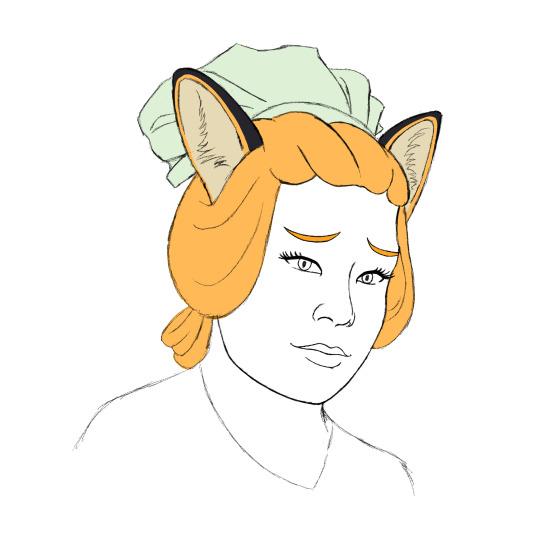

Style 1 is a straightforward Heian Japan inspired style. Fairly easy to design and draw but THE MOST BORING. Style 2 incorporates a kerchief, a popular accessory among Song Dynasty women, as well as the trendy "sorrowful brows"/愁眉. Style 3 takes some influence from the Khitan Liao Dynasty with its plaited braids wound over the head. The tall spiral hairstyle was an attempt to emulate the aesthetics of Buddha and Bodhisattva images.
#mythology#fantasy#fairy tale#folklore#folktale#poll#hanfu#汉服#chinese mythology#kitsune#prompts#build a lesbian#writing prompt
11 notes
·
View notes
Note
What's Wukong's relationships with the Monkie Kid gang like? We've already briefly touched on him teasing Tang a little, but what about the others?
I don't expect they see much of him early on - even in the canon show, it took them until the s1 special to even SEE him, and until the end of s2 to meet him properly, and your version of him is even more difficult to get ahold of - but I could imagine him having a bit of a rocky start with some of them? Especially Pigsy. The guy probably blames Wukong for everything that happened to MK, doesn't he? Like, "if that guy had never made you his successor, none of this would've happened! And he can't even be bothered to train you personally most of the time!"
overall tentative, at least until S3!
indeed he's a busy busy guy, and when he visits it's only thanks to some skillful use of clones and time management, and tbh the Incident scare kind of puts everyone on edge when it comes to just how much Wukong truly cares about MK if he let smth like that happen at all.
MK and even Red Son reassure them as much as they can, but they are reasonably skeptical and slow to forgive. At the end of S1 though he does stick around for a bit for a proper introduction and Tang and Pigsy take him aside for a bit of a mentor version of a shovel talk xvx
thing is that during S2, Wukong becomes more present, not less! Macaque has already made his debut and needless to say, Wukong isn't pleased, and he's already on a protective streak. He doesn't need to chase after LBD clues or the Samadhi Fire map, what he does need is to keep a closer eye on things for the slightest shift or hint. Him and Red Son work fairly closely to track down what is going on, and what might be coming around the bend, and doing their best to guide and reassure the rest of the gang. They are all new to this celestial business after all.
Wukong may be a tease with Tang but only because he has older brother rights; he does his best to reassure Tang's poor nerves as much as possible. With Sandy, he gets along like butter and toast, and they often meditate together. Mei brings out the old trickster hellraiser in him for better or worse, and he's quite helpful when it comes to showing her some basics on her dragon powers; he was and still is pretty close with Ao Lie after all!
Pigsy however, is not very on board to giving him a second chance. He sees the others warming up to him and takes it upon himself to be the skeptical voice of reason in the group. It reminds Wukong all too much of old Bajie, much to his personal amusement, but he knows he has to get the pig to lower his guard or else things might get tricky when shit hits the fan.
It only happens at the S2 finale, with Wukong taking a huge hit for MK and ending up having some of his powers stolen instead of MK's. It's a huge power up that LBD wasn't expecting (she's a lackey but she's standing in for Macaque until the time is right) and it gives them the window to get away. Neither MK or Wukong are in fighting form but they aren't powerless either, and MK didn't lose the staff. He's just, terribly demoralized which is arguably worse xvx
Pigsy rails on him for not fighting back, not doing more, but in truth, Wukong CAN'T. He's not just a sage anymore, he's a bodhisattva; he's limited in how much he can affect the mortal world, and in truth he wasn't even permitted to be in Megapolis all the time that he was there. He bent the rules because MK needed him, and he could only step in front of MK to shield him because that hit would have been devastating. cus the rules are rules, but that's his successor; he'd never make him go through smth he wasn't 1100% sure he wouldn't pull through
that finally gets through to Pigsy, reluctantly but he can trust his own eyes and ears well enough. xvx
49 notes
·
View notes
Text

We will now speak about the instructions for dying according to this Dharma tradition.
For the practice of the transference of consciousness according to the teachings of the Mind Training, it is as the root verses say: How to die, the Mahayana teaches these five strengths. It matters how you act.
These five strengths are the same as those previously mentioned: positive seeds, aspiration, revulsion, resolution and familiarization.
1) The power of positive seeds.
When we practitioners realize that we are about to die, that we are in the grip of a fatal disease, and that there is no way that we can prolong our lives, we should make an offering to our Teacher and the Three Jewels of all our possessions, giving them away wherever it is most beneficial and meritorious. We should deal with all our unfinished business and have no attachment or aversion for anyone or anything.
2) The power of aspiration.
Making the seven branch offering to our Teacher and the Three Jewels, we should pray as follows: 'May I be free from fear in the bardo, and in all my future lives may I be blessed with the practice of the twofold Bodhichitta. May the Victorious Ones bless me, especially the master who has taught me the Bodhichitta practice, the Mind Training instructions. ' We should pray like this again and again, confident that our Teacher will take care of us.
3) The power of revulsion.
We should remember that ego-clinging has brought us sorrow in the past. Even now, the hope that we might continue to live, attachment to our bodies as something precious, worries as to the way in which our wealth will be used: all this might still occasion a lot of suffering. If even now we are unable to rid ourselves of such clinging, we will never have peace. We should let our bodies go like earth and stones, thinking that they are not worth holding on to.
We are suffering just because of our attachment to them. Just look! - on the outside they are skin, inside they are filled with flesh, blood, bones and all sorts of disgusting substances. They are actually nothing but bags of dirt and there is no need to identify them as ourselves. Let them be burned; let the birds or dogs devour them! Reflecting in this way, we rid ourselves of self-cherishing.
4) The power of resolution.
We should remind ourselves that when we have to pass through the bardo, by meditating on the precious Bodhichitta, we will in fact be meditating on the heart essence of all Buddhas and Bodhisattvas. It will be impossible for us to fall into the lower realms. By resolving to practise Bodhichitta constantly with strong determination, we guard ourselves from the terror of the bardo.
5) The power of familiarization.
We should constantly be mulling over the techniques just described: how to practise the twofold Bodhichitta, how to exchange happiness for suffering, how to develop compassion towards those who are hostile. We must live in such a way that, through remembering the Mind Training constantly, we will be able to apply it when the time comes for us to die and we are in a lot of pain.
- Dilgo Khyentse Rinpoche - Enlightened
Courage - Shambhala Publications
#Dilgo Khyentse Rinpoche#Padmasambhava#Guru Rinpoche#buddha#buddhist#buddhism#dharma#sangha#mahayana#zen#milarepa#tibetan buddhism#thich nhat hanh#four noble truths#tantric#amitaba buddha#buddha samantabhadra#Bodhisattva#rainbow body#vajrasattva#vajrapani#vipassana#dzambala#dzogchen#manjushri
10 notes
·
View notes
Text

FANDOM: LEGO Monkie Kid

MULTI-CHAPTER BOOKS:
SFW:
SO GIVE ME JUST ONE MORE CHANCE (ONE MORE GLANCE)
STATUS: Posted on AO3! (Completed) | Part One of “A Second Destiny” series
WC: 29,000+ | CHAPTERS: 12/12
GENRE/RATING: SFW — Teen And Up (Rated for canon-typical violence, moments of peril, and slightly heavy themes)
PAIRING: Qi Xiaotian | MK/GN!Reader (Gender Neutral Pronouns - They/Them, Second Person Perspective, Use of Y/N), Strangers-to-Friends-to-Something More?
SUMMARY:
After hearing the cries of suffering and pleadings for salvation from Lady Bone Demon’s tyranny, Bodhisattva Guanyin, the goddess of mercy and compassion, grants the reader one more chance, gifting them a miracle. She sends them back in time to the very first event that started everything: MK finding Monkey King’s staff. Now armed with the knowledge of a bleak future and some new powers, the reader must approach the first step in doing whatever it takes to save them all.
A/N: This book depicts the events from LEGO Monkie Kid: A Hero Is Born!
ONE-SHOTS:
SFW:
A BIT OF A FIXER-UPPER
STATUS: Posted on AO3! (Completed)
WC: 25,000+ (yeah, you’re getting everything in one chapter)
GENRE/RATING: SFW — Teen And Up (Rated for swearing, and moments of peril)
PAIRING: Red Son/GN!Reader (Gender Neutral Pronouns - They/Them, Second Person Perspective, Use of Y/N), Strangers-to-Friends-to-Lovers
SUMMARY:
When you were hired by the infamous Red Son as his personal assistant, you expected to help him out with some administrative tasks, running errands here and there while he was busy doing whatever. But you hadn’t expected that you were going to form an unlikely bond with the demon, that you were going to learn surprising things about him, and that you were ultimately going to be the person he’d confide in upon encountering a significant problem.
And in spite of him being one of your most unconventional clients, you were going to fall for him along the way, little by little.
(This whole process also could’ve gone a lot smoother if only Red Son hadn’t tried to poorly disguise himself during your first interaction.)
(Which you easily saw through, but continuously failed to mention throughout the ones that followed.)
A/N: This narrative takes place between the ending of S1 and Spider Queen’s Revenge.
ART:
Find more under #mari’s doodles!
S4 Drawing of MK & etc…
My depiction of the gender-neutral reader with their lotus symbol!
MISCELLANEOUS:
My S4 theories and headcanons about Wukong’s past (The Brotherhood, his fallout with Macaque, his mountain imprisonment, and more!)

#just revamping my masterlist lol#sfw#mari muses#lmk x reader#lmk mk x reader#lego monkie kid x reader#lego monkie kid fanfic#lego monkie kid#lmk qi xiaotian#qi xiaotian x reader#lmk mk#lmk red son#lmk sun wukong#lmk mei#lmk pigsy#lmk tang#lmk sandy#lmk mo#lmk demon bull king#lmk princess iron fan#lmk lady bone demon#lmk guanyin#lmk red son x reader#red son x reader
63 notes
·
View notes
Text
emiya alter killed taiga who got into kiaras cult ( this was revealed in a fate seraph manga

It was a popular theory that EMIYA Alter was the Shirou from Mind of Steel Ending. The combination of the events from then, his life ‘hero-ing’, and finally the events with Kiara really broke him entirely
One of his bond lines says something like "I was already on that road (to become like the EMIYA we all know), but then I met (Kiara) and things became like this", so it makes sense that he would have started from a point where he had already decided to become a counter guardian, it also makes sense that he would call his other self "my past self", then.
Got this from the some spoiler discussion
Taiga's son got an incurable disease. Taiga, who didn't believe in religion at first, had no choice but to join the sect of Sesshōin, which has excellent medical resources and claims to be able to cure diseases, for his son's sake, but this is just the appearance of the sect.
At that time, Emiya knew the shady scene of the sect, and the name of the cure was actually doing inhumane things. In order to prevent the world from being corrupted by such a sect, Emiya chose to destroy it.
On the way of trying to save her son, Taiga was also gradually influenced by the sect. Although she failed to save her son, in the end, she became a member of the resistance against Emiya and pointed her gun at him.
the mind of steel ending was shirou becoming like kiritsugu taiga was the closest thing he had to a mom like natalie for kiritsugu

youtube
This chapter really shows how truly evil Kiara is, no matter the reality, always a corrupting force that twists and destroys anyone who even contacts her, taking them at their emotional lowest, using them and then throwing out like next week throw trash. Truly one of most evil characters in fiction in my opinion.
youtube
7 days ago
Sessyoin is a LOT of things. I think what she is most of all is sad. She was put up on a pedestal at a young age & hailed as a bodhisattva, an enlightened being here to bring others to enlightenment, but she's a sad, lonely, little girl on the inside.
CCC heavily implies that she got a servant with the Child trait because she desired to be seen as a person for once instead of an immaculate Savior or simply an object of sexual desire. But despite all of this, she DOES believe that she's helping people.
She believes that giving yourself over to pleasures of the flesh is enlightening… & she's not entirely wrong because she IS a Bodhisattva, by definition, a person with the ability to reach nirvana but delays doing so out of compassion for others to lead them to the enlightenment that they themselves reached.
Sessyoin has a LOT more nuance than people give her credit for & boil her down to being just a horny nun
155
Reply
Share
User avatar
level 5
Original_Reddit
·
6 days ago
Punch Kiara in the face
-3
Reply
Share
User avatar
level 5
Amerietan
·
6 days ago
:JiangZiya: GIVE MALE SWIMSUIT SERVANTS
You're being a little too nice to her. CCC heavily implies she got Hans as a child because she's into kids, and she chooses not to ascend because when she did she found out she was a tiny fish in a huge pond, and would rather be a huge fish in a small pond.
-15
Reply
Share
User avatar
level 6
Lissica
·
6 days ago
:Vich: Completely honest business woman
she chooses not to ascend because when she did she found out she was a tiny fish in a huge pond, and would rather be a huge fish in a small pond.
That was in Tsukihime, not in Fate/CCC
38
Reply
Share
User avatar
level 6
QueenAra2
·
6 days ago
Quick question. Where are you getting that she's into kids?
17
Reply
Share
User avatar
level 7
Amerietan
·
6 days ago
:JiangZiya: GIVE MALE SWIMSUIT SERVANTS
It's mentioned - I believe Hans theorizes it - that his childlike appearance likely is caused by what Kiara is attracted to.
Kinda impressive tho. She left Shirou mind broken harder than OG EMIYA (who went through lifetimes of killing as CG)
277
Reply
Share
User avatar
level 3
RadiReturnsOnceAgain
·
7 days ago
·
edited 7 days ago
I was gonna say something similar - with EMIYA, part of the reason he held so much resentment is that he didn't break. He endured for an eternity, unable to let go of his ideals because he had nothing left. He hated his younger self so much because when Shirou defied him, he knew that Shirou would never break because he himself didn't.
But here's Kiara, who takes someone who could endure an eternity without breaking, and just shatters them and their ideals beyond recognition. It's nuts. www . reddit . com/r/grandorder/comments/15ezt7c/seraph_manga_has_confirmed_it/
I think FGO made people forget just how bad Kiara was. Between the funny horny memes with Anderson and how there may just be a sliver of FGO Kiara's original self left you might overlook how she still doesn't regret anything she did and is only behaving out of amusement.
When Kirei Kotomine calls someone a monster worth fearing, you know you are dealing with some vile shit.
7 days ago
Kiara basically have Taiga joined her cult, Archer was sent to kill Kiara…Taiga protected Kiara with her life
148
Reply
Share
User avatar
level 4
8dev8
·
7 days ago
And then Kiara killed herself when mocking them to add insult to injury
132
Reply
Share
User avatar
level 5
StrivingStar
·
7 days ago
Being Emiya is suffering
52
Reply
Share
User avatar
level 4
chaoskingzero
·
6 days ago
·
edited 6 days ago
Taiga protected Kiara with her life
What's even worse is she was just one of MANY
He had to kill THOUSANDS of Cultists to get to Kiara
Innocent People she had twisted so thoroughly they were willing to do anything for her
I knew it I goddamn fucking knew it. Kiara took probably one of the most, if not the most, sacred people in Shirou's life away from him. Mind you in the UBW route during the Caster/Taiga hostage scenario Shirou was actually going to kill Rin if she did anything that could jeopardize Taiga, the word "kill" is blanked out because Shirou didn't want to acknowledge that was going through his mind. That's how much he loved her.
688
Reply
Share
User avatar
level 2
AiasRider
OP
·
7 days ago
"Best Girl Since 2004"
Taiga is Shirou's constant that keeps him from breaking. Don't forget how he didn't even think twice about killing Shinji in the Fate route in the school.

As we see in Chaldea, he has constant memory loss, no sense of taste, he can't even access his own reality marble properly because he's locked outside of his own self for eternity.
7 days ago
·
level 4
RadiReturnsOnceAgain·7 days ago·edited 7 day
edited 7 days ago
He lost in the way that mattered most, which was their war of ideologies. He succeeded at the cost of everything. The fight mindbroke him and left his ideals and identity in tatters; she basically made it impossible for him to continue being himself.
As we see in Chaldea, he has constant memory loss, no sense of taste, he can't even access his own reality marble properly because he's locked outside of his own self for eternity.
229
Reply
Share
User avatar
level 5
BeAsterios
·
6 days ago
I have to take a moment to appreciate the fact that Kiara literally trounced Shirou in the battle that most matters in most of Type-Moon stories. Or at least those written by Nasu.
23
Reply
Share
User avatar
level 5
Hexbug9
·
7 days ago
It's telling that the manifestation of an object feels a connection to him
19
Reply
Share
User avatar
level 5
vernil
·
7 days ago
Won the battle, lost the war.
8
Reply
Share
User avatar
level 4
x_q_tion
·
7 days ago
It wasn't about the result.
It's about sending a message.
The biggest, fattest, middle finger to a man who sacrificed everything for his belief.
We didn't see it but I know Kiara had the biggest sh*t-eating grin and was laughing like a maniac when she jumped off the building.
132
Reply
Share
User avatar
level 5
Yatsu003
·
7 days ago
Actually, her last words to him was that she loved him and wholeheartedly prayed for his salvation…which was basically her equivalent of a massive middle finger.
Ideals are a powerful aspect in the Nasuverse. While Emiya may have ‘won’ in the tactical sense (eliminate his objective), it’s clear he lost in a battle of ideals.
97
Reply
Share
User avatar
level 4
archeisse
·
7 days ago
All beauty is to be cherished
It still spat on his ideals and efforts. Sometimes it's not really a matter of objectively succeeding, but sunk cost fallacy.
30 notes
·
View notes
Note
What does Wukong do as a Buddha? Does it mean he doesn’t fight anymore?
I've seen several interpretations of what Wukong does as a Buddha and honestly, I think any of them is possible really.
In most cases, I've seen him portrayed as still a physical fighter, never holding back if the call for action or an injustice. However, while he does answers calls to action he also has the chance to deny those calls as well, hindering his own reputation if he does but he often provides a good reason. In any case, I rarely see interpretations of him where he isn't allowed to fight.
But more often than not I see versions of him where he takes on a student, mostly in the Lotus Lantern version, but he does have a passing on of the mantle of martial arts and using one's power for protection rather than aggression. In these cases, while he does show to support fighting, he is more of a passive fighting role and lets the new generation take over from what they have learned.
The only times I really don't see him fight as the Buddha is in the one-off movies where he gives up his staff and someone else picks it up. In these case, Wukong has sworn off fighting but eventually gets rope back into it one way or another finding a way to balance his enlightenment while also finding how to be still active and continuously learning and growing.
From what I can tell is that despite being enlightened maybe Buddhas and Bodhisattvas still go to lessons and still cultivate to learn and grow in their crafts. It is almost like enlightenment isn't a destination but a continuous journey that one is always walking down and with the changing of the world, so does the people in it have to always be open to learning new things and how to adapt to the world around them. I think with Wukong and how he is an immortal being he would always be traveling and learning while also teaching as well what is means to get where he is. Wukong is a being that has seen the worst of the world and the best of the world, being at the top and at the lowest points and being able to travel between heavens, and hells, and earth with gods, humans, and yaoguai. Wukong is a symbol of always transforming and changing, never staying as a single form and thus always having something to learn and something to teach.
Depends on how much he gets involved with heavenly or human affairs as I think he would try to mind his own business in most cases, but if ever asked or if ever sought out he would have a hard time saying no to certain people that he sees great potential in.
24 notes
·
View notes
Photo
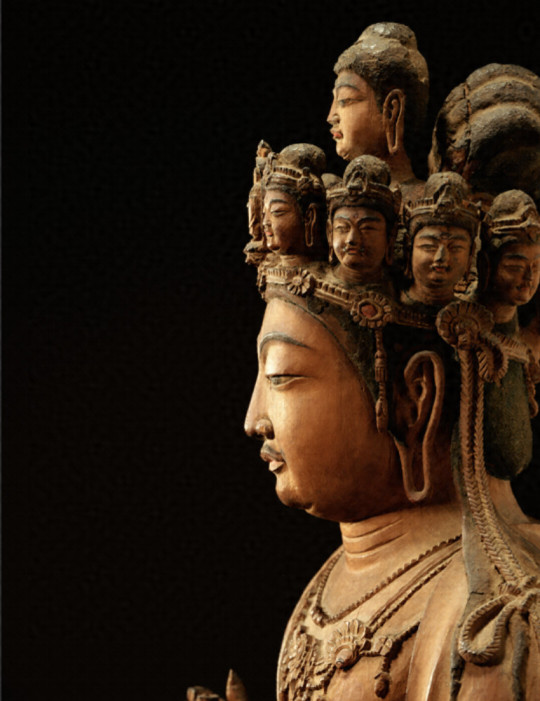
The Quest for Buddhism (106)
Buddhist cosmology
Mental Factors in Buddhism (Ref)
Mental factors (Skt: caitasika, Pali: cetasika), in Buddhism, they are identified within the teachings of the Abhidhamma (Buddhist psychology, 3rd century BCE and later). They are defined as aspects of the mind that apprehend the quality of an object, and that have the ability to colour the mind. Alternate translations for mental factors include "mental states", "mental events", and "concomitants of consciousness". Within the Abhidhamma, the mental factors are categorised as formations (Skt: samskara) concurrent with mind (Skt: citta).
Mental factors are aspects of the mind that apprehend the quality of an object and have the ability to colour the mind.
The caitasika dharma, means phenomena arising from the mind, suggesting that the mental factors are not primary to the mind but arise within a larger framework. A mental factor, again, is defined as the aspect of the mind that apprehends a particular quality of an object. Because it is characterised by the qualities of activity and non-neutrality, it has the ability to color the mind in dependence on the way it manifests. Hence, a feeling of desire from seeing what is conceived as a beautiful object affects the other mental factors that are present at that time, and this colors the whole mind.
The relationship between the main mind (Sanskrit: citta) and the mental factors can be described by the following metaphors:
The main mind is like screen in a cinema, and the mental factors are like the images projected on the screen. In this analogy, we typically do not notice the screen because we are so caught up on the images.
The main mind is like a king who sits passively on a throne, and the mental factors are like the king's busy ministers. It was suggested that the main distinction between the mind and mental factors is that the mind apprehends an object as a whole, whereas mental factors apprehend an object in its particulars.
[Photo top & below: Eleven-faced Avalokitesvara Bodhisattva, Nara National Museum, Japan]
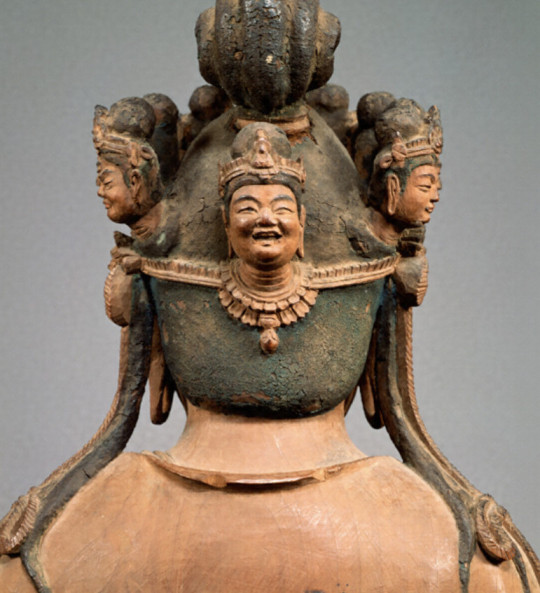
仏教の探求 (106)
仏教の宇宙論
心所(しんじょ)〜 仏教における心的要因(参照)
心所 (しんじょ、梵: チャイタシカ、巴: チェータシカ) とは、仏教における心的要因のことを意味しており、阿毘達磨 (あびだつま、梵: アビダルマ、巴: アビダンマ、紀元前3世紀以降の『ダルマの研究(仏教心理学)』)の教えの中で識別されいる。それらは目的の質を理解し、心を着色する機能がある心の側面として定義される。心所の代替訳としては「精神状態」、「意識」の付随物および「心的なでき事を含んでいる」などが含まれる。アビダンマの中では、心所は、本心 (梵語:シッタ)と同時に形 (梵語:サムスカーラ)として分類される。
心所の法 (梵: チャイタシカ・ダルマ) とは、対象の質を理解する心の側面であり、心を彩る能力を持つものである。
心所 (心的要因) は、心から生じる現象を意味し、心の要素が一義的ではなく、より大きな枠組みの中で生じていることを示唆している。この心的要素とは、やはり、ある対象の特定の性質を理解する心の側面と定義される。それは活動性と非中立性という性質を持つため、その現れ方によって心を彩ることができる。したがって、美しいと思ったものを見て欲求を感じると、そのときの他の心的要素に影響を与え、心全体を彩ることになる。
本心 (梵語:シッタ)と心所 (心的要因)の関係は、次のような比喩で表現することができる:
本心は映画館のスクリーンのようなものであり、心的要因はスクリーンに映し出される映像のようなものである。この例えの場合、私たちは映像に夢中でスクリーンに気づかないのが普通である。本心は玉座に受身で座っている王のようなもので、心的要因は王の周りの忙しい大臣たちのようなものである。心と心的要因の主な違いは、心が対象を全体として理解するのに対し、心的要因は対象をその特殊性において理解することであると指摘されている。
#mental factors#caitasika#abhidhamma#buddhist psychology#buddhism#philosophy#mindfulness#meditation#rupa-jhana#avalokitesvara bodhisattva#nature#art
146 notes
·
View notes
Note
Hello again! I hope you don't mind. What's your opinion on Azure Lion, and the Brotherhood? You said they were a toxic group, can you explain how and why? I am very dense. Also have you watched the newest Monkey King movie? What do you think of it? Are there any part of JTTW or Sun Wukong's story you'd like to see be made into a movie that doesn't get much attention? Not LMK verse of course. I'd like to see Ao Lie, the White Dragon Horse's story get expanded on, especially when the group encounter the Dragon family during their journey. What about you? What's your opnion on LBD's host, or Bai He as the fans are calling her? Would you like an interaction between her and SWK? Have a good month!
ok imma save your brotherhood question for last because once i start with them and swk's relationship with them, i will not stop.
anyway,
no, i haven't seen the new Monkey King movie yet T^T i hope to see it soon when i have free time, but uni's began, so i will be busy with assignments T^T goodbye summer vacation :'(
as for what jttw story i'd like to see more of? hmmmmm, idk, though tbh i am very new with any jttw interpretation (my introduction to this story was through OSP, and after seeing the sun&moon poll i decided to check out lmk), so my personal information is still small compared to the people who grew up with the many stories and variations of Journey to the West and its characters.
however, i kind of wanna say Sha Wujing/Sandy? mostly because he does seem like an interesting character (2nd strongest out of the companions if i'm remembering right), and is fairly clever with his fighting (which might be why he gets along with swk a lot). idk, it would be fun to get some background on how he acquired his skull necklace (pretty sure they were enemies of his???? or something idk) and his own motivations for redemption, not to mention he does become a Bodhisattva just like swk and Tripitaka (pretty Pigsy/Zhu Baije doesn't???), so that would be fun to touch on!
moving on now....i actually do like how the fandom just adopted :BD's host and we all affectionately call her Bai He! it's sweet and i like that we all kind of want to see her own recovery of being possessed for like months (or a year idk lmk timeline is weird and funky and no i am not annoyed-) i am a big fan of the "Macky adopts previously possessed child out of solidarity but also she latched onto him first and wouldn't let go so he's kind of stuck with her now :)" it's very fanon but, eh, i'm a sucker for "reluctant dad to protect the smol" characters (prob another reason why i love Pigsy and swk so much lmao).
ALSO, i think her interactions with swk would be so funny (for me) and awkward (for swk) because she's like "thanks for saving the world and me!" and swk like "MHM! uh yeah, sure, np kiddo" bc he did almost kill her (tho he really did try to find a way to not do that) but also Bai He might not even be mad at him for that. (maybe i want her to attempt to befriend him, but swk is just so nervous and feeling a tad guilty so he avoids her but she's a persistent little fucker, maybe i want to a lot, sue me)
idk what her role is now in the show tbh. she could be sidelined now, and we only get cameos of her (s3 ending & s4 special) for the time being just showing her slow recovery (lmk has been doing a "minor/background character development happening behind the scenes" for awhile (DBK fam) so i wouldn't be surprised if we see that with her). but it's possible that she could grow to have some role in s5 or s6 (maybe she's got some leftover LBD powers bc post-possession symptoms, maybe Mr. Hoodie Man wants to use her too bc she was such a great host for LBD, maybe she saw something plot relevant while possessed concerning MK and wants to warn him or his friend??? WHO KNOWS???)
ok.....Brotherhood™️ what are my thoughts on them......
this post is already long as is, and i have class in 30 minutes, oh boy let's go >:3
sO, let try and summarize my thoughts of them before delving in: i think that narratively, the Brotherhood are a great way for establishing who Sun Wukong was pre-jttw as well as giving us access to his history with Macky (THANK FUCKING GOD I WAS SO DESPERATE FOR THEIR BACKSTORY).
the Brotherhood is also a great way to showcase MK's growing similarities with swk and the narrative parallels the two characters have for each other. we already knew swk was trying to mentor MK is a way that was different from how swk lived his life before because, we he's shown, he really does regret his past actions, and wants MK to be a better version, believes MK can be this better version of him. and you can see him trying, but also he fails to really explain WHY his teaching methods are slow and vague sooooooo, uh oh :)
anyway, character-wise.....the Brotherhood is written to be both sympathetic and dislikable. the sympathetic aspect comes with Azure and his Cause™️ because that shows you that "wait a minute...he really did want to do good, but lost sight of it and the harm he was doing along the way." you're supposed to sympathize with him, you're supposed to feel confused about his shaky relationship with swk because "Azure only wanted to do good, yet swk ruined it" <- this is some excellent unreliable narrator shit i love about this show btw
HOWEVER! Azure is not an archetype character (lmk doesn't really do archetypes. okay, they do, BUT it's more of deconstruction of the archetype than really using an archetype, you feel me?) he is a character who is deeply flawed. he is idealistic and vain (yes, yes he is vain bc have you seen this lion????) Azure built up swk on a pedestal of what a true role model king should look like (nevermind that swk's kingdom was on a island and his subjects were just monkeys, meaning his reign was fairly small compared to Heaven, therefore more manageable BUT I DIGRESS)
basically, Azure placed so much admiration and all his ideal onto swk, who was frankly a lot younger than the celestial lion being that he would have only recently met him post-Havoc & he was only about 500-600 years old by then (maybe????), and saw the monkey more as a perfect weapon to use to defeat the Jade Emperor and start a new, "more compassionate" era.
ok, and this is just me speaking, but, Azure, honey, if you really wanted to help restart Heaven into helping out the poor humans, instead of the very flawed bureaucracy you argued against.....maybe, don't continue on with a monarchy????? idk, maybe it's the Western influence talking but Azure, if you hate the celestial lords and emperor so much, maybe create a system that DOESN'T favor the lords and emperor????? break the whole system apart and create something new???? course you didn't think that far (which was eloquently shown in the special) so i'm honestly not surprised that your mission failed so many times
anyway, the dislikable aspect! Peng is a wonderful character for this section! so, when meeting Azure, you may come to a couple conclusions: wow a pretty lion! is he trustworthy? well, he seems to really want to help out.....damn he's got quite the silvertongue there, very convincing and great orator....you seem very upset about whatever swk did to you, huh? but meeting Peng you get: ooooh pretty bird man! oh, they're kind of a bitch, aren't they? yeah, still a bitch (and depending on the viewer, bitch can be affectionate or derogatory)
but yeah, so Peng, one of Azure's brother trio who worked with him in the Celestial Court and views him as the leader of the Brotherhood rather than swk (actually, none of the brotherhood members even consider swk their leader, except Azure and maybe Macky (but that might be bc Macky does not fucking care about the brotherhood member BUT swk) bc the rest view swk as their prized weapon)
Peng is really the character that starts to make you reconsider Azure's trustworthiness because my god is this bird the most condescending and bitchiest of friends. they are that toxic friend, okay? it was because of Peng that i clocked in "oh, ok, this is high school toxicity 101, got it" lol
anyway, Peng does not really seem to care that much for...the Cause™️ like Azure and Yellow Tusk do. rather, they seem to just stick around mostly because Azure and Yellow Tusk are their brothers and that's it. i guess props for staying loyal??? but still, Peng is the character that gives us the first crack into Azure's worthy crusade because their character will resort to violence first, turns on anyone who slightly disagrees with Azure's methods (*cough cough* Mac *cough cough*) or, hm, let's say....surrenders to the Jade Emperor, is missing for 500 years, then miraculously is freed and is working with a Buddhist monk?
so yeah, uh running out of time but to sum up: Azure and the brotherhood were never really "friends" they were colleagues who though they all had a common goal to defeat Heaven but their loyalty was built on ideals and pedestals and flaky attitudes which was why Mac was never comfortable around them, why DBK stopped interacting with them after the war, and WHY swk was so easily pointed as a traitor and a villain by the Camelhead Trio.
*jazz hands* and there you go, i would say more but i have class!
#lmk#lmk analysis#lmk brotherhood#lmk sun wukong#lmk six eared macaque#lego monkie kid#asks#I HAVE 5 MINUTES FUCK#long post
22 notes
·
View notes
Text
The Real Lore Behind Douma’s Blood Demon Art: A Chinese and Japanese Buddhist Analysis

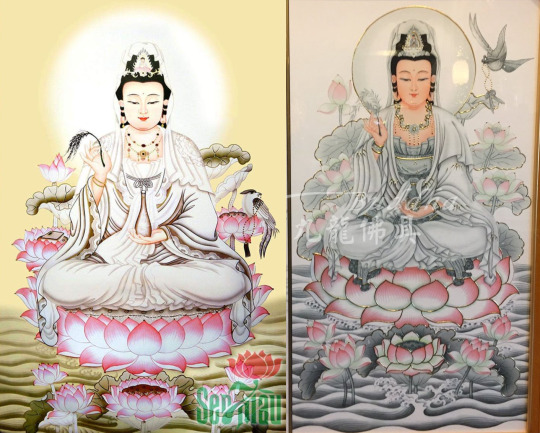
Water Lily Bodhisattva
Guanyin, Guan Yin or Kuan Yin is the Buddhist bodhisattva associated with compassion. She is the East Asian equivalent of Avalokiteśvara and has been adopted by other Eastern religions including Chinese folk religion.
Chinese Bodhisattva/ Goddess of Compassion, Mercy and Kindness is considered to be a mother-goddess and patron of seamen.
In Chinese Buddhism, Guan Yin is synonymous with the Bodhisattva Avalokitesvara, the pinnacle of mercy, compassion, kindness and love.
(Bodhisattva- being of bodhi or enlightenment, one who has earned to leave the world of suffering and is destined to become a Buddha, but has forgone the bliss of nirvana with a vow to save all children of god.)
Guanyin is the Chinese translation of Avalokiteshvara, the bodhisattva of compassion. Bodhisattvas are enlightened beings who chose to stay on earth as accessible examples for Buddhist faithful to follow.
As the Chinese Buddhist bodhisattva “Kuan-Yin embodies the Divine Feminine” (1) and is known as the “Great Mother of China”. (8) She is the goddess of fertility, of healing and of magic. She is a mother figure, a friend, a guide and a protector for women. She is what ever you need her to be. For it is her sacred task to “hear the cries of the world” and to answer them with love, mercy and compassion.
She is crossed-legged, looking at us with compassionate, kindly eyes. She seems the sort of person one might approach with a shameful confession or to receive sympathy after a rebuff from the world, when one is feeling defeated and without energy to put up the normal guard and pretences. She has a shawl across her fragile shoulders, a finely-sculpted chain around her neck and a lotus flower in the left hand. It’s early evening and a group of people have gathered around her, of varied ages and backgrounds, construction workers and business people, schoolgirls and bureaucrats. Some are mumbling, others smiling as one might at the sight of an old friend.

One goes to Guan Yin for relief from feelings of self-hatred. She is a little like an ideal friend or family member, an imaginary sister or mother. She suggests alternatives to despising oneself. She knows that benevolence towards others has to begin with self-acceptance. Her kindly eyes and smile have a habit of making one cry – for as we know from films, the moment one breaks down isn’t always or even mostly when one is facing overt hostility, rather when, after a period of hardship, one finally encounters kindness and space to admit to the difficulties one has been labouring with in stoic lonely silence for too long. One can be weak with Guan Yin, she isn’t impressed by the normal worldly criteria of success, there is no shame in crying in front of her and admitting the scale of one’s distress. She has the measure of the difficulties involved in trying to lead a halfway decent ordinary life.
Guan Yin is what Buddhists call a bodhisattva, and what Christians would call a saint. The Mayana branch of Buddhism to which Guan Yin belongs recognises many hundreds of bodhisattvas, usually historical figures, born in a variety of locations across Asia, whose qualities of character have earnt them a divine status. The bodhisattvas are mentioned in books and appear in paintings, but primarily, they feature as sculptures, three dimensional beings ranging in size from small dolls to light-housed sized giants and made in anything from rubber to wood to jade.

Just as Christian saints will approximate the goodness of Jesus, so the boddhisattvas are said to have a compassion and calm akin to the Buddha himself. And yet, like saints, individual bodhisattvas are revered for their talents in particular areas, there are bodhisattvas who care especially about animals, others who have an affinity for coping with physical pain, others still who understand the challenges of bringing up children.
Guanyin is the Buddhist counterpart to the Virgin Mary and she fulfills a similar role: that of hearing us in our distress, meeting us with tenderness and strengthening us to face the tasks of life. The centrality of these maternal figures in both Buddhism and Christianity suggests that mature adult lives share moments of deep self-doubt – and longings to recover some of the security of childhood. We need to be reassured that these wishes are not a sign that we have failed as human beings.

Although the tale from The Precious Scroll of Incense Mountain and popular interpretations depict her as a beautiful young woman robed in white, this was not the original depiction of Kuan Yin. According to the Lotus Sutra, the sacred second century Buddhist scripture, Kuan Yin was a handsome and princely Bodhisattva named Avalokitesvara. A Bodhisattva is not a god or a goddess. Neither is a bodhisattva a Buddha, but rather a Buddha-to-be, an earthly manifestation of the self-born and eternal Buddha Amitabha. According to Buddhist traditions, anyone who exhibits a Buddha-like quality, such as morality, self-sacrifice, and wisdom, has within themselves the ability to become a Buddha.
Although all Bodhisattvas are compassionate and merciful, Kuan Yin is considered to be the embodiment of these abstract principles. The original name of Avalokitesvara means “Lord who Looks Down” in Sanskrit, while Kuan Yin, or Guanyin, in Chinese means “the Perceiver of the Sounds of the World.” In the Lotus Sutra, Kuan Yin protects the world in the time between the departure of the historical Buddha, Siddhartha Gautama or Shakyamuni, and the appearance of the future Buddha, Maitreya. The sutra detailed Kuan Yin’s miraculous deeds, such as freeing people from lust, hatred, and ignorance, and granting children to infertile women. In order to achieve her goals, Guanyin has the ability to assume any form, male or female, human or non-human, adult or child, is required to teach Dharma, the way of the Buddha, and to relieve suffering

From the Song Dynasty in the tenth century onward, Kuan Yin representations began to transition toward the female form. Scholars believe that this change was due to the adoption of local religions and the incorporation of regional goddesses into Buddhism religious practices. In the Fujian region, for example, the prevalent depiction of Kuan Yin is as a young maiden dressed in Tang Hanfu carrying a fish basket, acting as the custodian of the local fishermen. However, the most accepted representation of Kuan Yin in China remains the image of a young woman wearing a flowing white robe with necklaces of Indian or Chinese royalty and a crown depicting the Amitabha Buddha.

Guan-Yin (Goddess of Fertility)
Guan-Yin, a.k.a. Kwan-Yin or Kuan-Yin, is a divinity presiding over pregnancy as well as safe and easy delivery of babies at birth. Regarded as the protector of children and women, Guan-Yin sits at times with a baby in her hands.
Although Guanyin's power of granting children is already mentioned in the Lotus Sütra, these indigenous scriptures are noteworthy on two accounts: they emphasize Guanyin's power to grant sons, and they also call attention to her protection of pregnant women and assurance of safe childbirths.
Today, Guanyin is revered as a compassionate savior, mother figure, and bestower of children. She is primarily worshipped by Chinese Buddhist women who request her assistance during pregnancy, while giving birth, and when attempting to conceive a child. She is also considered to be the principal female protector of pregnant women, fetuses, and young children.

Water Infinity and Symbolism
In addition to the feminization of Kuan Yin, local mythologies and religious symbols also began to appear in Kuan Yin statues and paintings. Artistic depictions of Kuan Yin often depicted her standing atop a dragon or a lotus flower, holding various water symbolic elements like a weeping willow branch, a jar of pure water or a lotus flower. The vase of pure water, often in the left hand, sometimes shown pouring water, is one of the Eight Symbols of Good Fortune in Chinese culture. The vase contains pure water capable of relieving suffering and sickness. The willow branch, frequently in the right hand, accompanying the vase of water, is used to sprinkle divine water. Willows hold significant meaning as they are often found by pond or lake, and are capable of bending without breaking.
The Lotus blossom is a common symbol of purity in the Buddhist religion. The lotus flower, although beautiful, began its life in the dark and muddy sediment of the pond. Human beings are identical: life starts in the darkness of ignorance, but through Dharma, or the way of the Buddha, thrive away from the dark and toward the light. Kuan Yin, Bodhisattvas, and Buddha are therefore often shown standing or seated on a large lotus flower floating above the water, signifying their achieved enlightenment.

Kuan Yin is also sometimes depicted surrounded by dragons. Unlike Western cultures, which commonly associate dragons with the fire element, in Eastern traditions, the dragon symbolizes flowing energy, water, and Chi. Statues of Kuan Yin may show her being surrounded by a sea of dragons to represent her spiritual connection to water and establish her as the patronesses of fishermen.
The title of "Goddess of Mercy" was eventually bestowed upon Kuan Yin by Jesuit missionaries toward the late Imperial China era. Christian travelers saw the innate connection between Kuan Yin and their own Virgin Mary; understandably so. The universal ideal of compassion is often associated with femininity and motherhood. Kuan Yin, believed to have the power to grant children to infertile women, is sometimes depicted with a child or accompanied by two young children, Shancai and Longnu.

Similarity to the Virgin Mary
Some Buddhist and Christian observers have commented on the similarity between Guanyin and Mary, mother of Jesus. This can be attributed to the representation of Guanyin holding a child in Chinese art and sculpture; it is believed that Guanyin is the patron saint of mothers and grants parents filial children, this apparition is popularly known as the "Child-Sending Guanyin" (送子觀音). One example of this comparison can be found in Tzu Chi, a Taiwanese Buddhist humanitarian organisation, which noticed the similarity between this form of Guanyin and the Virgin Mary. The organisation commissioned a portrait of Guanyin holding a baby, closely resembling the typical Catholic Madonna and Child painting. Copies of this portrait are now displayed prominently in Tzu Chi affiliated medical centres, especially since Tzu Chi's founder is a Buddhist master and her supporters come from various religious backgrounds.
During the Edo period in Japan, when Christianity was banned and punishable by death, some underground Christian groups venerated Jesus and the Virgin Mary by disguising them as statues of Kannon holding a child; such statues are known as Maria Kannon. Many had a cross hidden in an inconspicuous location. It is suggested the similarity comes from the conquest and colonization of the Philippines by Spain during the 16th century, when Asian cultures influenced engravings of the Virgin Mary, as evidenced, for example, in an ivory carving of the Virgin Mary by a Chinese carver.

Guan Yin is usually shown in a white flowing robe - white being the symbol of purity -, and usually wearing necklaces of Indian/Chinese royalty. In the right hand is a water jar (as the Sacred Vase the water jar also one of the Eight Buddhist Symbols of good Fortune) containing pure water, the divine nectar of life, compassion and wisdom, and in the left, a willow branch to sprinkle the divine nectar of life upon the devotees as to bless them with physical and spiritual peace. The willow branch is also a symbol of being able to bend (or adapt) but not break. The willow is also used in shamanistic rituals and has had medicinal purposes as well.
The crown usually depicts the image of Amitabha Buddha (Fully Conscious Infinite Light), Guan Yin's spiritual teacher before she became a Bodhisattva.
A bird, mostly a dove, representing fecundity is flying toward her.
A necklace or rosary is associated with her calls upon Buddha for succor, each bead of it representing all living beings and the turning of the beads symbolizes that Guan Yin is leading them out of their state of misery and repeated rounds of rebirth into nirvana, hence the beads represent enlightenment.
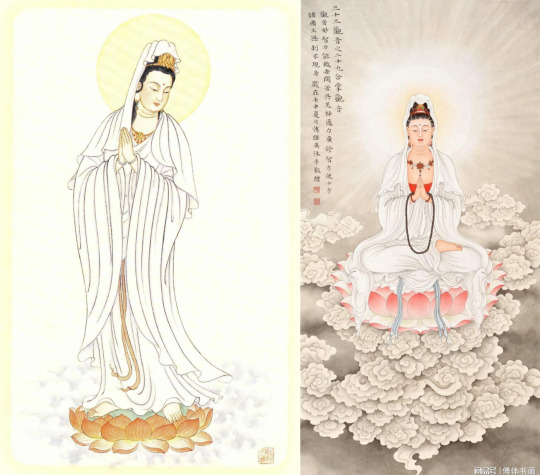
With the sweet dew drops she sprinkles from her vase, she relieves the suffering of beings everywhere and always, for countless autumns. In her hands she holds the vase of "sweet dew"; an elixir of compassion, the water of life, that relieves the suffering of all beings. In one hand she holds a small vase which contains Amitra “the dew of compassion” that is said to have the power to extend life, to cure and purify both body and mind when she pours or sprinkles it over human kind. A long life vase of healing waters: “sweet dew of compassion”. Of all the emblems that are sacred to Kuan-Yin it is water that is the most meaningful. When she bestows upon us her compassion it takes the form of rain or mystical showers sprinkled from her willow wand. Sprinkling sweet dews with a willow branch, she nourishes the entire dharma realm universally.
Miaoshan was her name: daughter of Miaozhuang; Princess of Zinglin, ‘The Raised Forest Kingdom’ in the far west. She was the youngest of three daughters. Without a male heir to continue the kingdom’s legacy, Miaoshan and her two sisters were forced into odious marriages by their father, king Miaozhuang. But unlike her sisters, Miaoshan was pure and, in her own way, stubborn. She believed that it was her life destiny to cultivate her spiritual essence and escape Samsara, the endless cycle of rebirth and suffering.

Unable to convince Miaoshan and further exasperated by her disobedience, King Miaozhuang eventually sent his contumacious daughter to be executed. Not long after, the king fell ill with a strange ailment. No physician in the kingdom or medicine from far off land could alleviate his malady. But a sagacious monk eventually appeared to the king; he apprised that the peculiar infirmity could only be mended by drinking an elixir made from the arm and eye of ‘one without anger.' The monk also informed the king of a hermit residing on Incense Mountain who was willing to make all the necessary donations.
The bizarre prescription was concocted; its effectiveness was instantaneous, and the king was promptly healed. Wanting to give thanks to his savior, the king made a pilgrimage to Incense Mountain. And to the king’s surprise, his savior was none other than Miaoshan, his daughter who had been miraculously saved from execution and was living a pious life atop the sacred mountain. The king fell before the maimed body of his daughter with penitence and begged for forgiveness. As tears were exchanged between father and daughter, Miaoshan transformed into a beautiful woman, robed in white, with one thousand arms and one thousand eyes. Miaoshan had obtained her enlightenment and escaped Samsara.
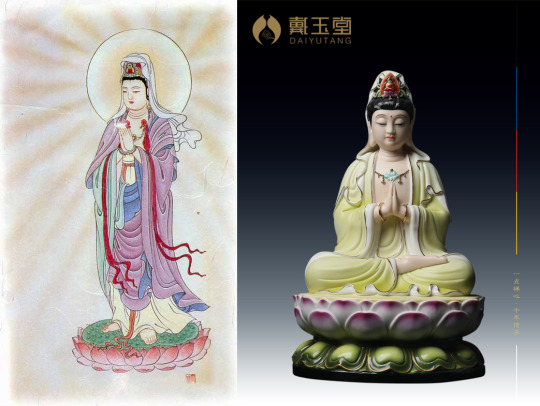
As she was about to enter the Pure Land Paradise, the Buddhism Heavenly Realm, Miaoshan heard a cry of anguish reverberating up from the world below. She looked around and saw a world filled with unbounded misery. Miaoshan could feel the gravity of a thousand worlds: each cry carrying countless lifetimes of sorrow. Miaoshan, now as the Thousand Armed Kuan Yin, turned her back to Heaven and took a vow of never leaving the Earth until all suffering has ended.
GUAN YIM AND THE THOUSAND ARMS
One Buddhist legend presents Guan Yin as vowing to never rest until she had freed all sentient beings from samsara, reincarnation. Despite strenuous effort, she realized that still many unhappy beings were yet to be saved. After struggling to comprehend the needs of so many, her head split into eleven pieces. Amitabha Buddha, seeing her plight, gave her eleven heads with which to hear the cries of the suffering. Upon hearing these cries and comprehending them, Guan Yin attempted to reach out to all those who needed aid, but found that her two arms shattered into pieces. Once more, Amitabha came to her aid and appointed her a thousand arms with which to aid the many.


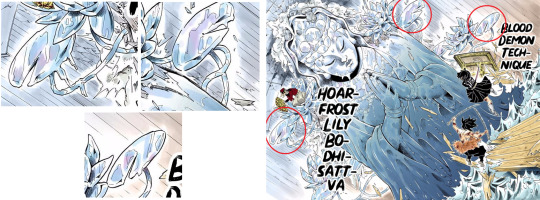
Turns out the “giant buddha” Douma invokes was actually a “woman” all along. I don’t even think there’s much room for debate with this one because Douma’s Water Lily Bodhisattva looks like a carbon copy of some Guanyin’s images out there. There are too many blatant references: the robe, the water lilies, the crown and the name of this technique. I’ve always found it curious how Douma’s “giant buddha” wears a robe/veil.
And let me inform/remind you that the version of the manga which’s available on the internet everywhere for everyone to read for free was translated by fans. I’m saying this because the translation for this technique does not exactly capture the original meaning. I tried to get a hold of the official Viz Media translation made by professional translators, but I couldn’t find it. However, I found the original japanese text and a very direct translation on the official KnY wikia:
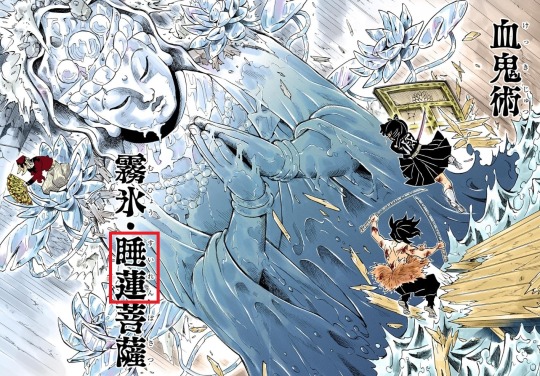

For those who want to search it themselves, 睡蓮(suiren) is “water lily” in japanese. If you put this word in a dictionary, you get “water lily” and if you copy and paste it on google images, you get lots of pictures of water lilies. I think Gotouge couldn’t have been more straight foward than “Water Lily Bodhisattva” unless if it was “Guanyin”. Guanyin isn’t a buddha yet, she’s still a bodhisattva and there are a ton of pictures of her where she’s surrounded by water lilies. Water lilies seem to be a recurring theme with her. I even created an album just about it on imgur. Bodhisattva is basically someone on the path to become a buddha. Some articles I’ve read compare a bodhisattva with a saint.



I think the freezing air Douma’s Water Lily Bodhisattva blows from its mouth might’ve been inspired by the healing water of sweet dew Guanyin sprinkles everywhere from her vase and willow branch. Guanyin’s element is water and ice is essentially frozen water. Douma’s version of Guanyin doesn’t have her vase of healing water of sweet dew and her willow branch she uses to sprinkle it everywhere, instead now she has a deadly freezing air that makes people suffer by freezing them and ripping their lungs to shreds while the real Guanyin heals, purify body and mind, extends life and relieves the suffering of people. I wonder if Douma summons her because he identifies with or even thinks he’s in line with her main purpose of saving all suffering and unhappy people.

What’s most disturbing is that Guanyin protects women, especially pregnant women and they pray to her when they want to get pregnant and Douma claimed that “Women have more nutrients in their bodies because they carry babies in their bellies. So you’d get much stronger if you eat lots of women.” Out of all the bodhisattvas, Douma summons the “female” bodhisattva who protects women, especially pregnant women, and grants them with pregnancy when he prefer to kill and eat women, especially pregnant women.
But I bet he doesn’t see any contradiction in this. On the contrary, maybe he “chose” to summon her because he prefers to eat women and especially pregnant women and she’s a symbol of fertility(to the point she makes women pregnant, so more food for Douma), womanhood, motherhood and femininity. Also, Douma thinks he’s saving people when he eats them, so he probably thinks he’s protecting pregnant women when he eats them just like Guanyin does.
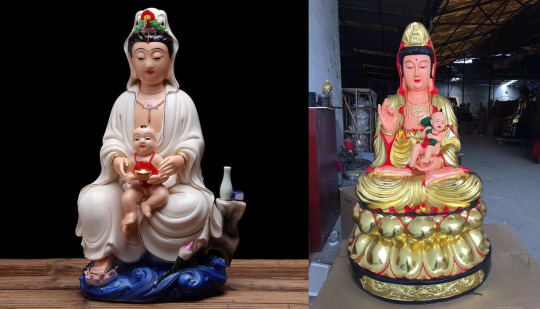

Another reason why Douma chose Guanyin might be because she’s a mother figure, the pinnacle of compassion, mercy, kindness and love, a guide for the lost souls even. Douma didn’t really have a childhood nor a proper mother figure, nobody to guide and protect him, he was always the one putting on a strong front in front of his adult followers to guide them through life and in front of his parents, so maybe he appreciates those qualities of Guanyin. It’s hard to tell if Douma is just acting or not, but for a +200 years old adult, he still acts very childish, which could be a consequence of not having the chance to act like a normal child during his childhood, so maybe he thinks he can finally have the security of childhood he didn’t have through a imaginary mother like Guanyin.
This also makes me think that Douma appreciates mothers, women with motherly traits or at least women with traits he associates with mothers. Some fans theorize that one of the reasons he fell in love with Shinobu was because she reminded him of his mother. His mother stabbed his father many times to death as revenge for his many extramarital affairs, then poisoned herself in a murder-suicide and Shinobu tries to kill him by stabbing him many times with poison, then sacrifices herself to kill him by letting him consume her because she poisoned herself with a lethal poison that kills demons to get revenge for he killing her older sister in a situation similar to a murder-suicide.
And then there’s Kotoha, the woman he chose to keep by his side until she died of old age. He said he wanted to keep her because she had a pure heart, was pretty and good at singing, but she was also a mother who went to great lengths for her baby boy, even challeging some very strict social norms for japanese women from that time by leaving her husband. Maybe deep down Douma wanted to have a mother like Kotoha. But when Kotoha found out that he was eating his followers, of course, even she cursed at him and insulted him, then ran away from him.
We don’t know if this is the only time he tried to bond with a regular human like this, but they caught him eating his followers and he sees their reactions of fear, disgust and anger, but we know how other characters react to him when they meet him and when he tries to be himself, to befriend them, to strike a conversation or to talk about himself. If Shinobu is any indicator, when he runs into a demon slayer, he’s, of course, met with deep disgust and hatred(though she particularly hated him), Kanao verbally destroyed his entire existence until she actually ticked him off because she knew his true nature and Inosuke naturally was just insulting him and cursing at him as usual.
He’s not even viewed favorably by his own demon boss and coworkers, Akaza has made it clear that he hates him, finds him annoying and too noisy(to the point he complained about him to Muzan according to the 2nd fanbook) and wants nothing to do with him, Kokushibo just ignores him so we can infer he also wants nothing to do with him, Nakime is very quick to dismiss him when he tries to invite her on a date/to go out with him so she clearly wants nothing to do with him as well as she probably knows his antics too well, his boss doesn’t like him and Hantengu doesn’t seem to want anything to do with anybody. He only seems to be on friendly terms with Gyokko.
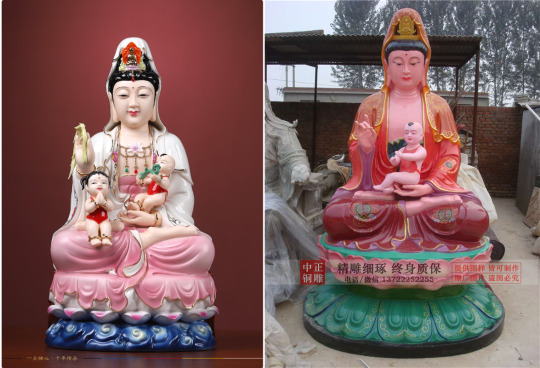
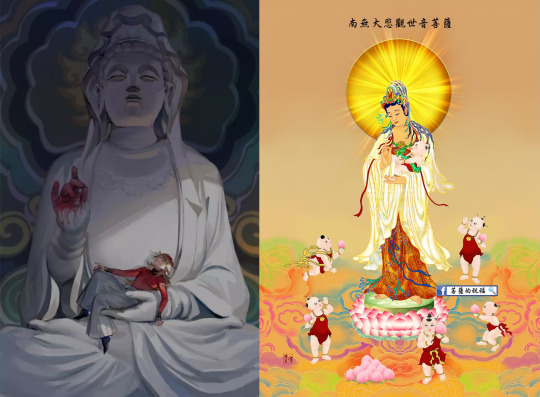
The more Douma tries to be himself around people and the more they know about him, the more they judge him, censor him, antagonize him, reject him, despise him, look down on him, fear him, ignore him, insult him, curse at him, etc. On the surfice he doesn’t seem to be very affected by it, but maybe deep down he wants someone who won’t judge him and accept him for who he is, how he thinks and what he does and maybe even someone he can drop the mask and be vulnerable with. We don’t know if Douma can make other bodhisattvas with his kekkijutsu, but the fact that he summoned Guanyin out of all of them when he needed the most, when he was about to die, might confirm that he wanted someone like that for him him since she is the perfect bodhisattva to fill that role.
In her most popular legend she used to be a princess who wanted to be a nun instead of marrying so her tyranical father tried to kill her. She miraculously survived and ran away from home. When her cruel father got sick, she gave her eye and arm to save his life. No wonder Guanyin became the bodhisattiva of mercy and compassion after that. She forgives everybody, accepts eveybody, loves everybody and doesn’t judge anyone. She’s like the perfect mother. I think it’s very easy to see why Douma would appreaciate her. She’s the buddhist counterpart to Virgin Mary and is one of the most popular and beloved figures of buddhism for a reason.
Considering all this, when Douma summoned that fake Guanyin made of ice when he was about to have his head cut feels much like a threatened child calling for their mother to protect them because they know their mother will defend them no matter what they did and that fake Guanyin feels like the mother of one of those teenagers who committed a serious crime, but she defends him anyway because she loves her son.



White Blizzard Princesses
The Three Saints of the West refer to the buddha Amitābha and the two bodhisattvas, Avalokiteśvara(Guanyin) on his right and Mahāsthāmaprāpta on his left. The main duty of the three saints is to save all sentient beings and to lead them to the Western Paradise. The buddha Amitabha is the leader of the Paradise of Bliss.
Right: Avalokitesvara Bodhisattva aka Guanyin Bodhisattva (Mandarin) 觀世音菩薩 (Japanese - Kannon Bosatsu)
Left: Mahastamaprapta Bodhisattva 大勢至菩薩 (Japanese - Seishi Bosatsu)
The depiction here of Kannon and Seishi calls to mind the Contemplation Sutra. In that sutra, the two bodhisattvas are said to have identical appearances, except for their head ornaments. Here are some passages. The complete descriptions of the bodhisattvas are worth reading.
On [Avalokiteśvara's] head, he wears a heavenly crown made of śakra-abhilagna-maṇi-gems, on which stands a transformed buddha (Amitāyus) measuring twenty-five yojanas in height.
“The heavenly crown of [Mahāsthāmaprāpta] bodhisattva is adorned with five hundred jeweled lotus flowers, each having five hundred jeweled pedestals. On each pedestal appear the pure and resplendent lands of the buddhas in the ten directions with all their boundless and glorious features.
“The mound on his head, shaped like a lotus bud, has a jeweled vase in front. This is suffused with various lights which reveal all the activities of the Buddha. The rest of the characteristics of his body are exactly the same as Avalokiteśvara’s.
“Bodhisattva Avalokiteśvara and Bodhisattva Mahāsthāmaprāpta have a similar appearance, wherever they are. Sentient beings can only tell one from the other by looking at the emblems on their heads. These two bodhisattvas assist Amitāyus in saving all beings everywhere.”
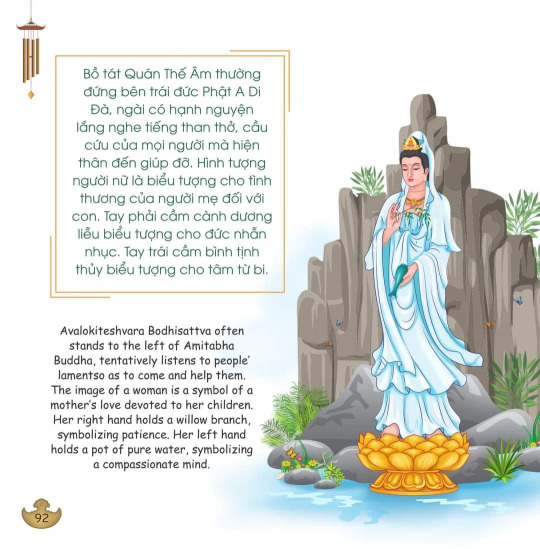

In Chinese Buddhism, Mahasthamaprapta is sometimes portrayed as a woman, Shih Chih, with a likeness similar to Avalokiteśvara. Mahāsthāmaprāpta is one of the oldest bodhisattvas and is regarded as powerful, especially in the Pure Land school, where he takes an important role in the Longer Sukhāvatīvyūha Sūtra. He is often depicted in a trinity with Amitābha and Avalokiteśvara (Guanyin), especially in Pure Land Buddhism.
In Japan Mahasthamaprapta is referred to as Seishi Bosatsu. Represents the principle of the power of wisdom. Seishi literally translates to mean, “to obtain strength.” Seishi is one of the thirteen Japanese Buddhas and is also one of the 25 Bodhisattva’s who descended from heaven with Amida to welcome dying souls into Amida’s Pure Land. Seishi is also known as one of the three sages in Pure Land Buddhism. In Pure Land Buddhism Seishi is usually depicted in a trinity with Amida and Avalokitesvara.
In this trinity Seishi is described as being one of the two attendants of Amida Buddha by representing wisdom and embodying the attributes of Amida. This is the Amida Raigo Triad and they all appear together because they are intertwined with the Buddha in the center called Amida, and on either side of him sits his Bodhisattva attendants, one being Seishi and one named Kannon. In Japan Avalokitesvara is referred to as Kannon Bosatsu( and Guanyin in China).
Seishi represents the principle of wisdom and this is conveyed symbolically in images when Seishi is depicted with a water jar in her crown. The water jar represents wisdom. Seishi is also depicted in images holding a lotus flower or with her hands held together in prayer. In the Contemplation Sutra Seishi is symbolized by the moon, as the moon represents wisdom. Seishi is portrayed in male and female form but it is most common for Seishi to be portrayed in female form.

After a brief description of the origin of the Taima-dera temple, the text introduces the pious daughter of Lord Yokohagi. She lived in the Nara period, during the life of Emperor Junnin , and later became known widely as Princess Chūjō. Various stories recorded in medieval times emphasize her unfortunate childhood, in which she was plagued by the death of her mother at a tender age, her stepmother’s demands upon her, and her father’s order of her execution, all of which led her to the path of Buddhism.
However, the text within the picture scroll does not mention any of this, but rather describes Princess Chūjō’s devout nature: She was raised deep inside the house (i.e. in a very sheltered fashion). (Her father) did not let her go outside the ornate decorated screens. In thinking of her and waiting on her as (if she were) a flawless jewel, it went even beyond (the level of thought) of the crane crying in the night (among her young ones), or the (mother) goose choked up by smoke in the (burning) fields. But, (despite her privileged upbringing, the princess’) heart was not touched by the flowers of spring, nor did she turn her thoughts to the autumn moon (i.e. she was not interested in worldly beauty). Searching deeply for the path of the Buddha, she looked for enlightenment in the Law. Accordingly, she copied one thousand sutras; she mounted them on jeweled rollers, tied them with gorgeous strings, and dedicated them to this temple.
She enthusiastically copied the Sūtra of Praising the Pure Land and made one thousand fascicle copies. This one-fascicle sūtra is a Chinese translation of the smaller Sukhāvatīvyūha sūtra by Genjō in 650 CE. Although the Sūtra of Praising the Pure Land was not as popular as the earlier translation by Kumārajīva in 402, Amitābha-sūtra, it enjoyed brief popularity in eighth century Japan when the Hossō School, founded by Genjō, established its influence in the capital. In 760, the scribes at the imperial scriptorium produced eighteen thousand copies of the Shōsan Jōdo-kyō in order to commemorate the demise of Empress Kōmyō, the empress of Emperor Shōmu.
In a chapter of the book on the praxis of Pure Land Buddhism, Hank Glassman argues that the copies for Empress Kōmyō were still circulated in the late Kamakura period and they were misidentified as Princess Chūjō’s copies intentionally by the Pure Land proselytizers to further the development of her legend. Thus according to Glassman, the copies attributed to Princess Chūjō are eighth century documents. Furthermore, the story compiled in Shijū hyaku innen-shū and many other later collections relates that the Princess served for Empress Kōken, the daughter of Empress Kōmyō, as handmaid and was appointed to the rank of middle captain from which her appellation originated. This association with the emperor seems to have made it easy to attribute the copies for Empress Kōmyō as Princess Chūjō’s. A few decades later, the Ippen Hijiri-e, the illustrated biography of Ippen, recounts Ippen’s visit to Taima-dera in Kōan.
There he was given one copy of the Sūtra of Praising the Pure Land believed to be copied and donated by Princess Chūjō. Although he treasured it tremendously because the princess was believed to be an avatar of Bodhisattva Seishi, one of Amida’s attendant, he gifted it to the monks on Mt. Shosha.
During Ippen’s confinement for prayer, the temple monks bestowed on him a priceless temple treasure, a scroll of the Sūtra in Paradise of the Pure Land. This sūtra is among a thousand scroll copies by the hand of the donor, Princess Chūjō. Since they say that this person was a manifestation of Seishi Bosatsu, Ippen regarded it as an extremely precious thing and treasured it. But at the end of his life, when he burnt his books and other things, he gave it to the monks of Shoshazan.
Although Guanyin (Avalokitesvara) is a great bodhisattva mentioned in many Buddhist sutras, the Chinese people know her primarily through her human manifestation, Princess Miaoshan (“Wondrous Goodness”). The legend of Miaoshan and its relationship with the pilgrimage center Fragrant Mountain (Xiang- shan) in Henan Province has received considerable scholarly attention.
"Kuan Yin, whose name means "one who hears the cries of the world," is perhaps the most widely revered Buddhist saint in the world. Known as Avalokiteshvara in Sanskrit, Kannon in Japanese, and Chenrezig in Tibetan, this compassionate bodhisattva is at the heart of all Mahayana Buddhist traditions. Sometimes depicted as male and other times as female, Kuan Yin took the vow to free all sentient beings from their suffering. The legend of Princess Miao-Shan is the origin story of how she became the bodhisattva known as Kuan Yin. Princess Miao-Shan lived in a country called Raised Forest around 700 B.C.E. Instead of marrying a prince according to her father's wishes, she followed her own path of spiritual practice and left the royal life behind.
Amitābha, Amida or Amideva is a celestial buddha described in the scriptures of the Mahāyāna school of Buddhism. Amitābha is the principal buddha in the Pure Land sect, a branch of Buddhism practiced mainly in East Asia, while in Vajrayana Amitābha is known for his longevity attribute, magnetising red fire element, the aggregate of discernment, pure perception and the deep awareness of uniqueness of phenomena. According to these scriptures, Amitābha possesses infinite merits resulting from good deeds over countless past lives as a bodhisattva named Dharmakāra. "Amitābha" is translatable as "Infinite Light," hence Amitābha is also called "The Buddha of Immeasurable Life and Light".
Amitabha is the Buddha of Infinite Life, and he can be recognized by the vase he holds in his lap, a symbol of longevity as it contains amrita, the nectar of immortality.
He is depicted in red color and in a meditation position, holding in his hands a vase containing amrita, the nectar of immortality that bestows longevity, and an ashoka (painkiller) tree grows from the vase.
He is mostly depicted sitting and holding in his hands a vessel containing the nectar of immortality.
According to the Larger Sūtra of Immeasurable Life, Amitābha was, in very ancient times and possibly in another system of worlds, a monk named Dharmākara. In some versions of the sūtra, Dharmākara is described as a former king who, having come into contact with Buddhist teachings through the buddha Lokeśvararāja, renounced his throne. He then resolved to become a Buddha and to create a buddhakṣetra (literally "buddha-field", often called a "Pureland" or "Buddha Land": a realm existing in the primordial universe outside of ordinary reality, produced by a buddha's merit) possessed of many perfections. These resolutions were expressed in his forty-eight vows, which set out the type of Pureland Dharmākara aspired to create, the conditions under which beings might be born into that world, and what kind of beings they would be when reborn there.
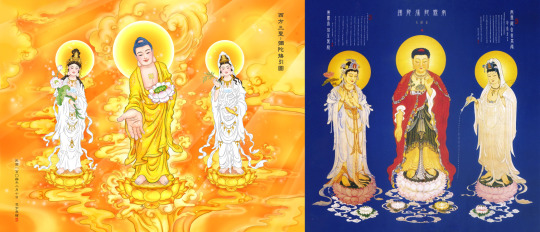
Pure Land
The main text of the Pure Land schools is the Sukhavativyuha-sutra (“Pure Land Sutra”). Written in northwestern India probably before the beginning of the 2nd century CE, the Sukhavativyuha exists in two original versions, a longer one that emphasizes good works and a shorter version that emphasizes faith and devotion alone. This sutra tells of a monk, Dharmakara, who heard the preaching of Lokeshvararaja Buddha aeons ago and asked to become a buddha. After millions of years of study, Dharmakara vowed, among other things, to establish a Pure or Happy Land, also known as the Western Paradise, if he achieved Buddhahood. In this Pure Land no evil would exist, the people would be long-lived, they would receive whatever they desired, and from there they might attain nirvana. Dharmakara then revealed in a series of 48 vows the means by which this Pure Land can be reached. Several vows emphasize meditation and good works on earth as a prerequisite, but the 18th one (a famous vow in the later development of Pure Land schools) states that, if one merely calls the name of the Buddha at the moment of death, then one will be reborn in the Pure Land.
Dharmakara, it is believed, attained Buddhahood and is known as the buddha Amitabha (Sanskrit: “Infinite Light”; Chinese: Emituofo; Japanese: Amida) or the buddha Amitayus (Sanskrit: “Infinite Lifespan”). He is flanked in the Pure Land he created in fulfillment of his vows by Avalokiteshvara (Chinese: Guanyin; Japanese: Kannon) on his left and Mahasthamaprapta on his right, who assist Amitabha in bringing the faithful to salvation.
By the 3rd century CE, the Amitabhist doctrine had spread from India to China, where a school based on it gradually became the most popular form of Buddhism. Followers of the Tendai school took Amitabhist teachings to Japan, where they attempted to weld the many sects of Buddhism into one system. By the 13th century CE, the Pure Land sect had separated from the Tendai school and spread among the common people of Japan through the work of two outstanding figures, Hōnen and Shinran.
The basic doctrines of the Pure Land schools emphasize the importance of devotion. Pure Land leaders teach that a person reaches salvation not by individual effort or the accumulation of merit but through faith in the grace of the buddha Amitabha. The main practice of those who follow the Pure Land teachings is not the study of the texts or meditation on the Buddha but rather the constant invocation of the name Amitabha, a practice based on the 18th vow of Dharmakara. Furthermore, in Pure Land Buddhism the attainment of nirvana is not the most prominent goal; it is rather to become reborn in the Pure Land of Amitabha.

Tanluan and the other 6th–7th-century Chinese Pure Land patriarchs, Daochuo and Shandao, were among those who rejected the role of works in salvation. Originally a follower of Daoism, Tanluan, while searching for the elixir of immortality, was converted to the Pure Land doctrine by an Indian monk. Dedicating his life to the spread of this doctrine, Tanluan preached the invocation of the name Amitabha and declared that even evil persons were eligible for the Pure Land if they sincerely uttered the nembutsu. He warned, however, that the lowest hell awaited those who reviled the Buddhist dharma.
Tanluan was followed by Daochuo, who argued that, because his was the age of the final decline predicted in Buddhist scriptures, people must take the “easy path” to salvation. They must trust Amitabha completely, for they are no longer able to follow the more difficult path of the saints. His disciple Shandao, believed by some Japanese Pure Land adherents to be the incarnation of Amida, shaped the doctrines of the later forms of Pure Land Buddhism. He distributed many copies of the Pure Land Sutra and wrote a commentary in which he taught that rebirth in the Western Paradise is made possible by invoking Amida. The nembutsu must be supplemented, however, by the chanting of sutras, meditation on the Buddha, worshiping of buddha images, and singing his praises.
The work of Shandao inspired Hōnen, the founder of the Pure Land sect (Jōdo-shu) in Japan, to declare that in this evil period people must put complete faith in the saving grace of Amida and constantly invoke his name. Hōnen expressed his beliefs in the treatise Senchaku hongan nembutsu-shu (1198), which was popular among the common people, as were his teachings generally. The treatise was burned by the monks of Mount Hiei, and his teachings were vigorously opposed by the established Buddhist priesthood. Indeed, opposition to Hōnen was so great that his rivals forced him into exile from 1206 to 1211.
Hōnen’s disciple Shinran, who was exiled at the same time, was the founder of True Pure Land (Jōdo Shinshu or Shin), a more radical Amida school. Shinran married with Hōnen’s consent, which thus suggests that one need not be a monk to attain the Pure Land. In Shinran’s teachings, which he popularized by preaching in Japanese villages, he rejected all sutras except the Pure Land Sutra, as well as the vows of Dharmakara in that sutra that stress individual merit. Basing his doctrines on the 18th vow, Shinran discouraged any attempt to accumulate merit, for he felt that this stood in the way of absolute faith and dependence on Amida. Furthermore, he rejected Hōnen’s practice of continual invocation of Amida, believing that the nembutsu need be said only once in order to attain salvation and that repetition of it should be regarded as praise of Amida and not as affecting one’s salvation. Thus, Shinran established the total ascendancy of the doctrine of grace. He also founded what would become the Shin school, the largest single Buddhist school in contemporary Japan. Throughout its history the Shin school has actively promoted music, dance, and drama and, since the late 19th century, has engaged in extensive educational and social welfare programs.
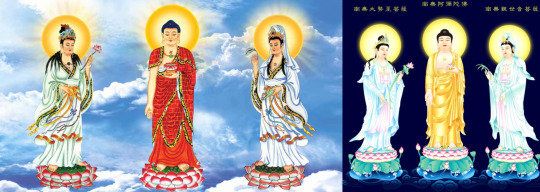
Pure Land Buddhism
Pure Land Buddhism offers a way to enlightenment for people who can't handle the subtleties of meditation, endure long rituals, or just live especially good lives.
The essential practice in Pure Land Buddhism is the chanting of the name of Amitabha Buddha with total concentration, trusting that one will be reborn in the Pure Land, a place where it is much easier for a being to work towards enlightenment.
Pure Land Buddhism adds mystical elements to the basic Buddhist teachings which make those teachings easier (and more comforting) to work with.
These elements include faith and trust and a personal relationship with Amitabha Buddha, who is regarded by Pure Land Buddhists as a sort of saviour; and belief in the Pure Land, a place which provides a stepping stone towards enlightenment and liberation.
Pure Land Buddhism is particularly popular in China and Japan.
History
Pure Land Buddhism as a school of Buddhist thinking began in India around the 2nd century BCE.
It spread to China where there was a strong cult of Amitabha by the 2nd century CE, and then spread to Japan around the 6th century CE.
Pure Land Buddhism received a major boost to its popularity in the 12th century with the simplifications made by Honen.
A century later Shinran (1173-1262), a disciple of Honen, brought a new understanding of the Pure Land ideas, and this became the foundation of the Shin (true) sect.
Pure Land Buddhism took off in Japan when the monk Honen (1133-1212) simplified the teachings and practices of the sect so that anyone could cope with them.
He eliminated the intellectual difficulties and complex meditation practices used by other schools of Buddhism.
Honen taught that rebirth in the Pure Land was certain for anyone who recited the name with complete trust and sincerity. Honen said that all that was needed was saying "Namu Amida Butsu" with a conviction that by saying it one will certainly attain birth in the Pure Land.
Honen
The result was a form of Buddhism accessible to anyone, even if they were illiterate or stupid.
Honen didn't simplify Buddhism through a patronising attitude to inferior people. He believed that most people, and he included himself, could not achieve liberation through any of their own activities. The only way to achieve buddhahood was through the help of Amitabha.
The Shin Sect
A century after Honan, one of his disciples, Shinran (1173-1262) brought a new understanding of the Pure Land ideas. Shinran taught that what truly mattered was not the chanting of the name but faith. Chanting on its own had no value at all.
Those who follow the Shin school say that liberation is the consequence of a person achieving genuine faith in Amitabha Buddha and his vow to save all beings who trusted in him.

Amitabha
Amitabha in context
The Pure Land sect emphasises the important role played in liberation by Amitabha (which means Immeasurable Light) who is also called Amitayus (which means Immeasurable Life).
People who sincerely call on Amitabha for help will be reborn in Sukhavati - The Pure Land or The Western Paradise - where there are no distractions and where they can continue to work towards liberation under the most favourable conditions.
The nature of Amitabha is not entirely clear. Encyclopedia Britannica describes him as "the great saviour deity worshiped principally by members of the Pure Land sect in Japan." Another writer says "Amitabha is neither a God who punishes and rewards, gives mercy or imposes tests, nor a divinity that we can petition or beg for special favours".
The mystical view of Amitabha regards him as an eternal Buddha, and believes that he manifested himself in human history as Gautama, or "The Buddha".
Amitabha translates as "Amito-fo" in Chinese and "Amida" in Japanese.
The story of Amitabha
Once there was a king who was so deeply moved by the suffering of beings in the world that he gave up his throne and became a monk named Dharmakara.
Dharmakara was heavily influenced by the 81st Buddha and vowed to become a Buddha himself, with the aim of creating a Buddha-land that would be free of all limitations.
He meditated at length on other Buddha-lands and set down what he learned in 48 vows. Eventually he achieved enlightenment and became Amitabha Buddha and established his Buddha-land of Sukhavati.
His most important vow was the 18th, which said:
If I were to become a Buddha, and people, hearing my Name, have faith and joy and recite it for even ten times, but are not born into my Pure Land, may I not gain enlightenment.
Since he did gain enlightenment, it follows that those who do have faith and joy and who recite his name will be born into the Pure Land.

Popularity
The sect's teachings brought it huge popularity in Japan, since here was a form of Buddhism that didn't require a person to be clever, or a monk, and that was open to the outcasts of society.
It remains a popular group in Buddhism - and the reasons that made it popular 700 years ago are exactly the same ones that make it popular today.
Understanding Pure Land
Amitabha Buddha is treated as if he were God
On the surface, yes. But perhaps chanting Amitabha Buddha's name is not praying to an external deity, but really a way of calling out one's own essential Buddha nature. However some of Shinran's writings do speak of Amitabha Buddha in language that a westerner would regard as describing God.
The Pure Land appears to be a supernatural place
On the surface, yes. But perhaps the Pure Land is really a poetic metaphor for a higher state of consciousness. Chanting the name can then be seen as a meditative practice that enables the follower to alter their state of mind. (This argument is quite hard to sustain in the face of the importance given to chanting the name in faith at the moment of death - when some supernatural event is clearly expected by most followers. And the chanting is not regarded solely as a meditative practice by most followers. However gaps between populist and sophisticated understanding of religious concepts are common in all faiths.)
There is no reliance on the self to achieve enlightenment
On the surface, yes. But in fact this is just a further move in the direction that Mahayana Buddhism has already taken to allow assistance in the journey to liberation. And the being still has much work to do when they arrive in the Pure Land. (Shinran however taught that arriving in the Pure Land was actually the final liberation - the Pure Land was nirvana.)

Buddhism and the Pure Land
Though some argue that its core beliefs and practices stand in opposition to the original teaching of the Buddha, Pure Land Buddhism is the most widely practiced sect of Buddhism in the world today. There are a number of reasons for the popularity of Pure Land Buddhism. It is possibly the most accessible form of Buddhism to the common people. The stories of the Pure Land give all those who practice and believe in the Pure Land a chance to reach enlightenment.
In Buddhism, the ultimate goal of life is to eventually reach enlightenment, or “Nirvana” as it is referred to in Buddhism. Traditionally, to attain Nirvana, followers must closely follow the teachings of the Buddha and take refuge in the Three Jewels; Buddha, the Dharma, and the Sangha.
Karma and Rebirth
In Buddhist belief, before attaining Nirvana, one must be reborn many times in order to create good karma for themselves, and eventually free themselves from karma entirely. Karma is essentially a system of cause and effect in Eastern religions. Karma determines the conditions a person will be reborn into, and a person’s current life is the direct result of their karma from previous lifetimes. If one lives a selfish or otherwise evil life, they may be reborn into one of the lower realms, such as the hell, hungry ghost, or animal realms. Living a good life allows a being to be reborn into higher realms. Eventually, through meditation and closely following the Buddha’s teachings, one can be free from the entire cycle of karma and reach Nirvana, the ultimate state of enlightenment, in which continued rebirths are unnecessary (Lopez 60).
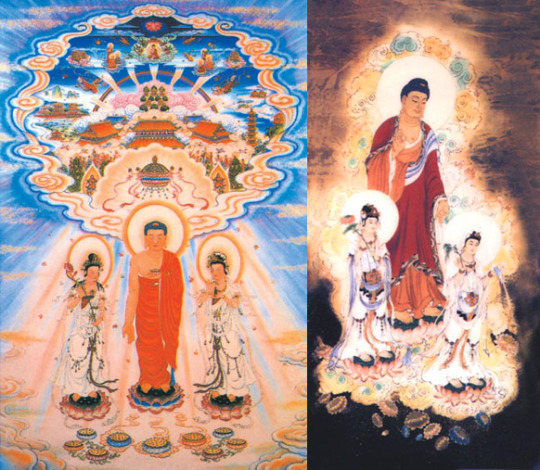
What is The Pure Land?
The Pure Land, however, is a way to escape suffering and rebirth into these lower realms before attaining Nirvana. Pure Land Buddhism is considered a branch of Mahayana Buddhism, but has some different beliefs than traditional Buddhism. In Pure Land Buddhism, one must only speak the name of Amitabha Buddha to be reborn into the Pure Land upon death. Amitabha Buddha, according to Pure Land beliefs, vowed to save all sentient beings who called upon his name. When someone calls upon Amitabha Buddha, they are able to be reborn into the Pure Land, where enlightenment can be obtained much more easily than on Earth. One needs not even seek guidance from a teacher in this tradition, as all guidance is received from Amitabha Buddha. It isn’t necessary to meditate or even to closely follow the Buddha’s teachings to be allowed to enter the Pure Land (Gach 219-221).
The Pure Land vs. Heaven
It isn’t difficult to draw parallels between the idea of the Pure Land and certain Christian beliefs. The idea of being able to be reborn into the Pure Land just by speaking Amitabha Buddha’s name is very similar to the idea of being forgiven for one’s sins and being able to go to Heaven just by accepting Jesus as the savior. In both of these belief systems, even the most evil people can have a second chance in the afterlife just by turning to the divinity figure of their religion (Leeming 69-72).

Why is Belief in the Pure Land so Important?
Because the Pure Land is so easy to reach, the goal of enlightenment, or Nirvana, is made much more attainable for followers of Pure Land Buddhism. The Pure Land welcomes “rich and poor, man and woman, old and young” (Gach 220). This is significant because it makes Buddhism, and the Buddha’s teachings, much more accessible to the common man. Because Nirvana was considered a difficult goal, especially for laypeople (people who are not monks or nuns), “various alternatives to it have been set forth, none perhaps more famous than the so-called ‘pure land’” (Lopez 60). The idea of the Pure Land was put forth to give followers an easier way to attain enlightenment, since a life of strict adherence to the Buddha’s teachings and meditation would not be realistic for common people trying to practice Buddhism.
The idea of rebirth into the Pure Land also gives great amounts of comfort to the dying, and the family members of the dying. Reciting the name of Amitabha Buddha “is a central element of death rituals” (Lopez 61). This “offers deathbed reassurance of a blessed afterlife” (Gach 220). Beings who are reborn into the Pure Land “suffer no bodily pain and no mental pain, rather they gain measureless causes for happiness” (Lopez 62). You can see how this idea of the Pure Land has gained popularity throughout Buddhist cultures as a means for helping followers to deal with death.
In Conclusion
The idea of the Pure Land in some Buddhist traditions has become a powerful myth. The possibility of being reborn into the Pure Land gives hope for attaining Nirvana to Buddhists who may not be able to follow the path set forth by the Buddha in this lifetime. Even people who have made many mistakes throughout their lifetime can escape the fate created by the negative karma they have accumulated and have a blissful afterlife.
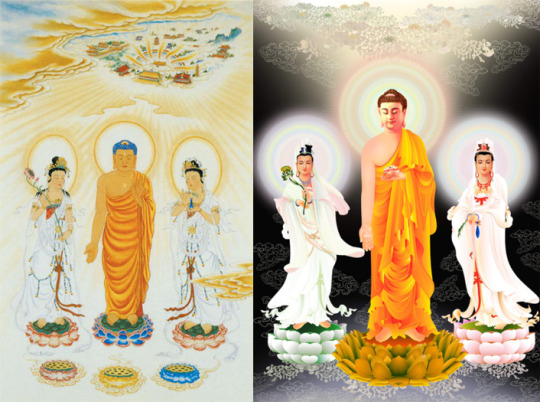
The Potential of Propagating Pure Land Buddhism in the West
Pure Land Buddhism at a glance
Among the many different schools of Chinese Buddhism—such as Chan (Zen in Japanese), Tientai, Huayen, and Fashiang—Pure Land arguably has the largest following. While its doctrinal development took place in China, Pure Land is the major school of Buddhism in Hong Kong, Japan, Taiwan, Vietnam, and other Asian countries.
The main reason for this popularity is that Pure Land Buddhism is characterized by its “easy practice:” the repetition of Amitabha Buddha’s sacred name (Na-Mo-A-Mi-Tuo-Fo) by adherents in their daily lives. While almost all Chinese Buddhists know how to recite Namo Amituofo in a temple, at home, or under any other circumstances, it does not mean that they are necessarily followers of Pure Land Buddhism, yet it does show how deeply Pure Land practice has penetrated the Chinese consciousness.
Na-Mo-A-Mi-Tuo-Fo is the name of the Buddha of infinite light and life, Amitabha. In Pure Land Buddhism, devoted recitation of Amitabha’s name is believed to be the quickest way for monastics and lay people to gain postmortem entry (rebirth) into the blissful realm known as the Pure Land—the home of Amitabha Buddha.
Pure Land adherents joyfully and sincerely entrust themselves to Amitabha’s deliverance, thus “faith by devotion” is the first step necessary for gaining rebirth in Amitabha’s Land of Bliss. All the inhabitants of the Pure Land are Amitabha’s dependents, and are also students, and enjoy almost the same wisdom and power as Amitabha Buddha. They are also assured of attaining enlightenment and Buddhahood. At first glance, this teaching seems similar to the Christian concept of salvation through Jesus Christ.

An independent school, or affiliated with other schools?
A temple of any Buddhist school (such as Chan) that includes Amitabha-recitation in its ritual or daily practice is said to propagate Pure Land Buddhism. Likewise, a layperson or monastic who recites Namo Amituofo for any reason may think that he is practicing Pure Land Buddhism. Is it really that simple? Can Pure Land teachings be practiced in affiliation with other schools of Buddhism?
As Pure Land self-identifies as a school of Buddhism, it follows that it must have its own complete and independent system of teachings. It must also be able to distinguish itself from other systems, both Buddhist and non-Buddhist. For instance, the Land of Bliss is not an ordinary pure land, or a mere heavenly realm, as many people think.
That said, there is also much overlap between Pure Land and other Buddhist schools. In any Mahayana school, bodhisattvas are required to make vows in their causal grounds and set forth their Bodhi Mind to deliver sentient beings of the Ten Directions. They must actively pursue wisdom for long periods of time to realize the ultimate truth. Moreover, they must achieve and accumulate immeasurable merit and virtue through myriad self-powered practices. In this way, they can deliver sentient beings of the Ten Directions before attaining Perfect Enlightenment and achieving Buddhahood.
However, the Pure Land teachings seem to set forth a different narrative. A Pure Land practitioner is a “receiver” of merit, rather than a “donor” of merit, according to the bodhisattva teachings. He is a recipient of infinite merit and virtue, dedicated by Amitabha Buddha to all those who practice the exclusive recitation of his sacred name. This is why Pure Land asserts itself as an independent school. Other schools use Amitabha’s name as a means to generate merit towards rebirth in the Pure Land. The Pure Land school teaches “faith by devotion” and receiving Amitabha’s merit and virtue through the exclusive recitation of his name. In this way, Pure Land adherents are reborn in the Land of Bliss naturally and effortlessly.
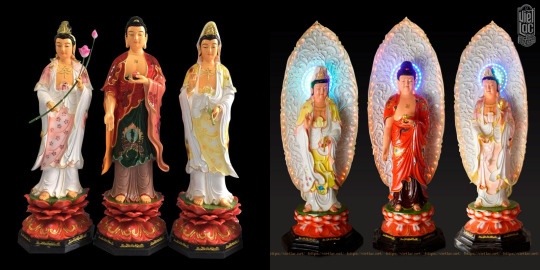
The two streams
Obviously, Pure Land stands in sharp contrast to other schools of Mahayana Buddhism, which focus almost entirely on meditation as a means to calm and purify the mind. However, these two Buddhist streams—Pure Land Buddhism and “conventional” Buddhism—are not necessarily antagonistic. Together, they fully elucidate the bodhisattva career, one focusing on the donor of merit, and the other on the receiver of merit.
In the West, Pure Land Buddhism is quietly but diligently practiced in communities of Asian immigrants, most of whom do not speak English. They generally meet in palace-like temples in most large cities of Europe and North America, and often escape the notice of mainstream Western Buddhists, who tend to think of Pure Land as “ethnic” Buddhism restricted to a particular group of Asian people. However, some scholars of religion are increasingly emphasizing that Pure Land is one of two distinct but important Buddhist streams in Western countries.
Considering that both Pure Land Buddhism and Christianity emphasize faith by devotion, there is a great deal of potential for propagating Pure Land in the West. Unfortunately, because of a relative lack of English-language material, Pure Land Buddhism remains unfamiliar to many Westerners and is currently less popular than Theravada, Vajrayana, or Zen Buddhism. When more English information is published and transmitted through social media, Pure Land Buddhism will likely grow in popularity. Westerners are hungry for religion that can be practiced by ordinary people in the midst of ordinary life, and the Pure Land path was taught specifically for this reason.
Moreover, Pure Land Buddhism provides a choice for other Buddhists who practice the meditative virtues. Should they grow discouraged at the prospect of practicing for many years to attain enlightenment, they may consider switching to Pure Land Buddhism. Through Amitabha-recitation, they can put faith faith in Amitabha’s deliverance and attain rebirth in the Land of Bliss, where conditions for practice are so optimal that Enlightenment naturally unfolds.

When Mahayana Buddhism arrived in Japan in the sixth century CE, the archipelago already had a native religion, Shinto, and the relationship between the two has been alternatively harmonious and fraught ever since, depending on many things, especially politics. Buddhism had a particularly hard time of it as recently only 150 years ago, during the Meiji Restoration, when the restoration of the Imperial family to power led many (including the Emperor Meiji) to denounce Buddhism.
But Buddhism has survived in its several forms, less the result of splits as of refinements. The two forms that came intact from China, and remain the forms one is most likely to encounter in Japan, are Pure Land Buddhism and Zen Buddhism. (To make things even more confusing, Pure Land Buddhism has itself split into two forms, Orothodox and Shin (True) Pure Land Buddhism. But for clarity’s sake, we’ll stay with general descriptions of the two main schools.)
The basis of Pure Land Buddhism is devotion. In this way, it is the more traditionally religious expression of the teachings of the Buddha, who did not talk about gods or promise heaven (or hell). Buddha was, if anything, a philosopher who had found a secret to understanding life; he never claimed divinity. But Pure Land Buddhism would sound somewhat familiar to devotees of Islam and Christianity: the basic idea is to show one’s devotion to what has been named Amida Buddha, the Celestial Buddha. (This Buddha is said to actually be based on an entirely different historical person, a monk called Dharmakāra, rather than the traditional Buddha, who was a prince known as Siddhartha.) Through devotion – prayer, chanting Amida Buddha’s name and other acts of devotion, one is assured one’s place in the Pure Land, or Western Heaven or, as Westerners of any religious stripe would call it: Heaven.
In Pure Land, moreover, one’s own work and deeds have no impact on one’s salvation. All that matters in one’s devotion to Amida Buddha. Thus, in Pure Land, which was brought to Japan by a man named Honen in the 12th Century CE, the way to salvation (heaven) was not through philosophy or meditation, but by “behaving themselves like simple-minded folk.” Likewise, the only practice required of Pure Land devotees is the recitation of the words “Namu Amida Butsu (homage to Amida Buddha).” Any other practice is seen as a sign of a lack of devotion to the Amida Buddha.

According to the scriptures of Pure Land Buddhism, the Land of Ultimate Bliss is situated in the western part of the cosmos. Why? It provides a clear destination that reassures the mortals’ faith of rebirth in that land, and after rebirth, we will attain perfect enlightenment, and our dharma body will permeate the worlds of the ten directions.
In The Infinite Life Sutra, Sakyamuni Buddha employed the Venerable Ananda as the target opportunity to introduce Amitabha Buddha’s Forty-eight Great Vows, which he accomplished by practicing the virtuous way of Bodhisattva over immeasurable kalpas. Amitabha’s great vows are for the benefit of all sentient beings. His Land of Ultimate Bliss is also for the benefit of all sentient beings, and his innumerous virtues and merits accumulated over the immeasurable ages are also for all of us mortals. Since all his great vows and all his virtuous practices are for us, and since he has attained Buddhahood, isn’t it true that we all may soon become Buddhas?
After Sakyamuni Buddha’s explanation, Ananda asked the Buddha: “Has Dharmakara Bodhisattva attained Buddhahood as a Buddha of the past, or has he not? Where is he now?” Ananda asked about Amitabha Buddha of the three ages: the past, present, and future: Has Dharmakara Bodhisattva been a Buddha of the past, or is he not a Buddha yet? If he is a Buddha in the present, where is he now preaching the Dharma and delivering sentient beings?
Why does Venerable Ananda ask this question? In what kind of mood? In these few verses, it is evident that Ananda is anxious to know about Amitabha Buddha. Why? Because Ananda has realized that there is Amitabha Buddha who delivers sentient beings, and there is the Land of Ultimate Bliss for sentient beings. He wants to know right away if Dharmakara Bodhisattva has become Amitabha Buddha; if he had and already passed away, we would have missed the rare opportunity to be free of samsara and attain Buddhahood. So, his first question is whether Amitabha Buddha was a Buddha long passed away.
His second question is if Dharmakara Bodhisattva has not attained Buddhahood, how long do we have to wait for him to do so?
Ananda’s third question is if he is a Buddha in the present, where is he now?
Then, the Buddha replies, “Dharmakara Bodhisattva is now a Buddha residing in the far west, as many as ten trillion Buddha-lands away, in the land called Peace and Bliss.”
In response to Venerable Ananda’s question, the Buddha replied that Dharmakara Bodhisattva has now become a Buddha, and resides in the West, some ten trillion Buddha-lands away, in a world called Peace and Bliss.
There are several names for that land. It is called the Land of Ultimate Bliss in Amitabha Sutra, as in The Contemplation of Infinite Life Sutra. The Infinite Life Sutra also calls it the Land of Peace and Joy and the Land of Peaceful Home. In the Treatise and Gatha on Rebirth in the Sutra of the Infinite Life by Vasubandhu Bodhisattva (⁓ 4th century), it is called Lotus Treasury World. These different names mean the same.
The Amitabha Sutra says the Land of Ultimate Bliss is in the west, and so does The Infinite Life Sutra. The Amitabha Sutra reads: “At that time, the Buddha told the elder Sariputra, ‘In the far west, beyond as many as ten trillion Buddha-lands away, there is a world called Ultimate Bliss, and in that land, there is a Buddha named Amitabha, who is even there expounding the Dharma.’”
Whether it is The Amitabha Sutra or The Infinite Life Sutra, they both tell us that the Land of Ultimate Bliss is in the West. So, why should we discuss the theme of Where the Land of Ultimate Bliss is? This is because the scriptures also say that the Land of Ultimate Bliss is “vast and incomparable, extensive, and limitless, and supremely wonderful”. The meaning of it is that the Land of Ultimate Bliss is so huge that it has no boundary and permeates the entire cosmos.

Sukhavati
Sukhavati, (Sanskrit: literally “Land of Bliss” or “Pure Land of Bliss”; often translated as “Pure Land”) in the Pure Land schools of Mahayana Buddhism, the Western Paradise of the Buddha Amitabha, described in the Pure Land sutras (Sukhavati-vyuha-sutras). According to followers of the Pure Land schools, which are widespread throughout East Asia, rebirth in Sukhavati is ensured by invoking the name of Amitabha, particularly at the moment of death.
According to the “larger” of the Pure Land sutras, only men may be reborn in Sukhavati; this teaching was repeated and adapted by some Buddhist groups as Pure Land teachings spread from India into East Asia. However, some vernacular Buddhist writings, particularly in East Asia, demonstrate a popular belief that women may also enter Sukhavati upon death.
Sukhavati is expressively described in the Pure Land sutras as being a joyous world, soft and glowing, filled with the music of birds and the tinkling of trees adorned with precious jewels and garlands of golden bells. Amitabha sits on a lotus in the midst of a terraced pond, attended by the bodhisattvas (“buddhas-to-be”) Avalokiteshvara and Mahasthamaprapta. The newly dead enter into lotus buds, which unfold when the occupants have become entirely purified and have attained enlightenment. Many are said to be reborn on Earth after leaving Sukhavati to become bodhisattvas working toward the liberation (moksha) of all sentient beings.

While I was doing my research, I noticed that the word “bliss” appeared very often with terms like Land of Bliss, Blissful Abode, Land of Ultimate Bliss, Pure Land of Bliss, Land of Pure Bliss, Realm of Bliss, Paradise of Bliss, etc. This reminded me that Douma had the word “bliss” written on hanging flags in the room where he receives his followers. Wondering if that was just a coincidence or not, I searched for the original japanese version of this panel to check if the kanji for this “bliss” and the kanji for “Land of Bliss” were the same or similar. To my utter surprise, the kanji were the exact same for both:

The japanese version of the wikipedia:

The Jisho dictionary and other dictionaries:


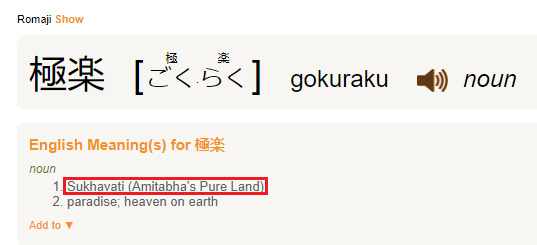
I was already thinking that Pure Land Buddhism and Douma’s Eternal Paradise Faith were identical and that there were obvious influences, but now I have concrete proof. Gotouge straight up wrote 極楽(gokuraku), which means Sukhavati, the name of Amitabha’s Pure Land four times in the room where Douma receives his followers! I don’t think they could have been more direct than that. By the way, 極楽(gokuraku) is even the name of a J-Pop song from 2016:

Unfortunately, the video clip doesn’t seems to have anything to do with Pure Land Buddhism, but I don’t know about the lyrics though. By the way, “Amida” is Amitabha’s japanese name. Anyway, I’ve always found it weird how Douma always talks about some paradise and how his followers blindly worships him as of he was a savior, even asking him to guide him to this paradise because his kekkijutsu is obviously influenced by buddhism, but that was not how I pictured buddhism at all. First, I always thought that there was no Heaven and Hell or Gods in buddhism. Second, I also thought buddhism was all about “going on a self-discovery journey” in search for enlightenment.
Because of these ignorant preconceptions of buddhism of mine, I always thought this whole messianic character and blind devotion to a religious leader didn’t belong in buddhism. Douma seemed like he was impersonating Jesus Chist way more. But after I searched about the topic, everything is so clear now. There’s not just one type of buddhism, but many types of buddhism.
Two major extant branches of Buddhism are generally recognized by scholars: Theravāda (Pali: "The School of the Elders") and Mahāyāna (Sanskrit: "The Great Vehicle"). Theravada has a widespread following in Sri Lanka and Southeast Asia such as Cambodia, Laos, Myanmar and Thailand. Mahayana, which includes the traditions of Zen, Pure Land, Nichiren Buddhism, Tiantai Buddhism (Tendai), and Shingon, is practiced prominently in Nepal, Malaysia, Bhutan, China, Japan, Korea, Vietnam, and Taiwan.
"Mahāyāna" also refers to the path of the bodhisattva striving to become a fully awakened Buddha (samyaksaṃbuddha) for the benefit of all sentient beings, and is thus also called the "Bodhisattva Vehicle" (Bodhisattvayāna). Mahāyāna also includes numerous Buddhas and bodhisattvas that are not found in Theravada (such as Amitābha and Vairocana).Mahāyāna Buddhist philosophy also promotes unique theories, such as the Madhyamaka theory of emptiness (śūnyatā), the Vijñānavāda doctrine and the Buddha-nature teaching.

Śūnyatā
Śūnyatā, शून्यता (Sanskrit meaning "Emptiness" or "Voidness"), is an important Buddhist teaching which claims that nothing possesses essential, enduring identity because everything is interconnected in a chain of co-becoming and in a state of constant flux. In various schools of Buddhism, Śūnyatā is a key concept used to express that everything one encounters in life is empty of absolute identity, permanence, or an in-dwelling 'self' because everything is inter-related and mutually dependent—never wholly self-sufficient or independent. The importance of this insight is especially emphasized in Mahayana Buddhism.
Widely misconceived as a doctrine of nihilism, the teaching on the emptiness of persons and phenomena is unique to Buddhism, constituting an important metaphysical critique of theism with profound implications for epistemology and phenomenology. In the English language, the word emptiness suggests the absence of spiritual meaning or a personal feeling of alienation, but in Buddhism the realization of the emptiness of phenomena enables liberation from the limitations of form in the cycle of uncontrolled rebirth.
Description
The theme of śūnyatā emerged from the Buddhist doctrines of Anatta (nonexistence of the self) and Pratitya-samutpada (Interdependent Arising). The Suñña Sutta, part of the Pali Canon, relates that the monk Ananda, the attendant to Gautama Buddha asked, "It is said that the world is empty, the world is empty, lord. In what respect is it said that the world is empty?" The Buddha replied, "Insofar as it is empty of a self or of anything pertaining to a self: Thus it is said, Ananda, that the world is empty."
According to the 14th Dalai Lama:
"One of the most important philosophical insights in Buddhism comes from what is known as the theory of emptiness. At its heart is the deep recognition that there is a fundamental disparity between the way we perceive the world, including our own experience in it, and the way things actually are. In our day-to-day experience, we tend to relate to the world and to ourselves as if these entities possessed self-enclosed, definable, discrete and enduring reality. For instance, if we examine our own conception of selfhood, we will find that we tend to believe in the presence of an essential core to our being, which characterises our individuality and identity as a discrete ego, independent of the physical and mental elements that constitute our existence. The philosophy of emptiness reveals that this is not only a fundamental error but also the basis for attachment, clinging and the development of our numerous prejudices. According to the theory of emptiness, any belief in an objective reality grounded in the assumption of intrinsic, independent existence is simply untenable. All things and events, whether ‘material’, mental or even abstract concepts like time, are devoid of objective, independent existence."
According to Thanissaro Bhikku:
Emptiness as a quality of dharmas, in the early canons, means simply that one cannot identify them as one's own self or having anything pertaining to one's own self...Emptiness as a mental state, in the early canons, means a mode of perception in which one neither adds anything to nor takes anything away from what is present, noting simply, "There is this." This mode is achieved through a process of intense concentration, coupled with the insight that notes more and more subtle levels of the presence and absence of disturbance (see MN 121).
From the Heart Sutra:
“Form is emptiness; emptiness also is form. Emptiness is no other than form; form is no other than emptiness. In the same way, feeling, perception, formation, and consciousness are emptiness.”
The view of “emptiness” (Sanskrit: śūnyatā) is at the core of Buddhism. The Sanskrit term is composed of the word śūnya, plus -tā (“ness”); śūnya meaning “zero,” “nothing,” “empty” or “void,” its root being śvi, or “hollow.” The principle of sunyata posits that all phenomena, including the “self,” are empty of “own-being” (Sanskrit: svabhāva), or an intrinsic essence or nature.
The Buddha taught that there are five aggregates (Sanskrit: skandhas) that collectively constitute a human individual:
Form (Sanskrit: rūpa)
Sensations (Sanskrit: vedanā)
Perceptions (Sanskrit: saṃjñā)
Mental formations (Sanskrit: saṃskāra)
Consciousness (Sanskrit: vijñāna)
While their nature is essentially “empty,” due to our ignorance and inability to realize the ultimate truth of “non-existence of self” (Sanskrit: anātman), these bodily and mental factors are subject to grasping and craving, and lead to suffering (as taught in the Four Noble Truths).
Emptiness encompasses the process of Dependent Origination (Sanskrit: pratītyasamutpāda), namely that all phenomena arise interdependently based on a convergence of causes and conditions.

The Prajñāpāramitā (Perfection of Wisdom) Sutras taught that all entities, including dharmas, are empty of self, essential core, or intrinsic nature (svabhava), being only conceptual existents or constructs. The notion of prajña (wisdom, knowledge) presented in these sutras is a deep non-conceptual understanding of emptiness.The Prajñāpāramitā sutras also use various metaphors to explain the nature of things as emptiness, stating that things are like "illusions" (māyā) and "dreams" (svapna). The Astasahasrika Prajñaparamita, possibly the earliest of these sutras, states:
If he knows the five aggregates as like an illusion, But makes not illusion one thing, and the aggregates another; If, freed from the notion of multiple things, he courses in peace— Then that is his practice of wisdom, the highest perfection.
Perceiving dharmas and beings like an illusion (māyādharmatām) is termed the "great armor" (mahāsaṃnaha) of the Bodhisattva, who is also termed the 'illusory man' (māyāpuruṣa). The Vajracchedikā Prajñāpāramitā Sūtra adds the following similes to describe how all conditioned things are to be contemplated: like a bubble, a shadow, like dew or a flash of lightning. In the worldview of these sutras, though we perceive a world of concrete and discrete objects, these objects are "empty" of the identity imputed by their designated labels. In that sense, they are deceptive and like an illusion. The Perfection of Wisdom texts constantly repeat that nothing can be found to ultimately exist in some fundamental way. This applies even to the highest Buddhist concepts (bodhisattvas, bodhicitta, and even prajña itself). Even nirvana itself is said to be empty and like a dream or magical illusion. In a famous passage, the Heart sutra, a later but influential Prajñāpāramitā text, directly states that the five skandhas (along with the five senses, the mind, and the four noble truths) are said to be "empty" (sunya):
Form is emptiness, emptiness is form
Emptiness is not separate from form, form is not separate from emptiness
Whatever is form is emptiness, whatever is emptiness is form.




The similarities between Douma’s Paradise Faith and Pure Land Buddhism are endless, it’s almost as if he plagiarized the latter. If his followers prostrating themselves before him and begging him to guide him to paradise isn’t enough to convince you, he complains about his followers being stupid and says that killing and eating them is alleviating their suffering and guiding them to enlightenment. According to the articles from my research, Pure Land Buddhism is a simplified form of buddhism for “stupid”, illiterate and simpleminded folk, many times suffering from poverty and natural disasters.
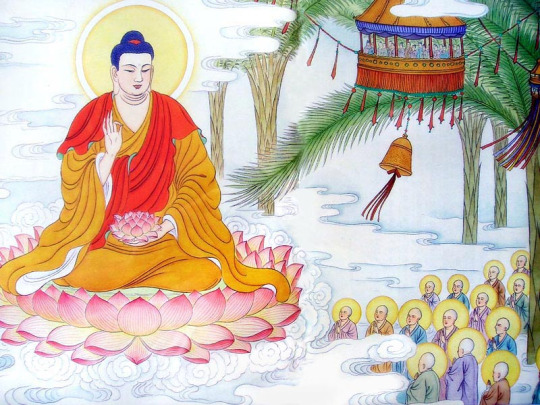
Amitabha said he wants to free people from suffering and and guide them to enlightenment and he wants to do that by sharing his accomplishes with his worshipers once they're born in his Western Paradise or Pure Land. This feels like he's merging with his worshipers, much like when Douma eats or ansorbs his followers. Next you will see correlations between Douma manga panels with various bits of articles from my research about Amitabha trying to prove the conection. You can skip this part if you want.
The Buddha is Amitabha, the Buddha of Infinite Light. He resides in his heavenly realm called the Western Paradise, or Pure Land. Devotees believe that absolute faith in Amitabha empowers a person to be reborn in his paradise. According to the scriptures, the Western Paradise is a land of bliss.
Pure Land Buddhism speaks not the mysterious and the subtle but rather illustrates the doctrines from facts; as long as you recite Amitabha Buddha, you will be born in the Land of Ultimate Bliss. It is because Amitabha, before he became Buddha, has made the vows for us, cultivated the virtues and merits for us, and built a land of peace and bliss for us. Now he is Buddha, in all time and everywhere in the universe. If we recite his name, Amitabha Buddha will hear us; if we worship him, Amitabha Buddha will see us; if we think about him, Amitabha Buddha will know. He blesses us and turns ill events to auspicious ones, bad luck to good fortune, crisis to manageable events. When facing death, Amitabha Buddha will hear our prayers, relieve our suffering, and come to lead us to his Land of Ultimate Bliss. The doctrine of Pure Land Buddhism is simple; its straightforward facts manifest its profound truth.
The Amitabha faith gained popularity in the Heian era. Followers of this faith leave themselves in the hands of the Buddha Amitabha in hopes of entering the pure land upon death. Life in the pure land is without worry or care and if you pray “Hail Amitabha Buddha” everyday, in the afterlife Amitabha himself will lead you to the holy land.
Although Amitabha, the great Buddhist god of mercy and sympathy, is called ‘sovereign teacher of the Western heaven’, he is better known as the ‘guide to the West’. In Buddhism, devotees believe that if they chant the Amitabha canons dutifully in their lifetime, their souls will be led to the Western Paradise by Amitabha at their hour of death.
It is as if Amitabha is always reaching out to us with a perfectly steady hand. But our hand, moving erratically all the time, a symbol of our thoughts jumping from one thing to another, must first be stilled before we can take his. By single-mindedly repeating Amitabha’s name as we are breathing our last breaths, our finally still mind will resonate with his and we will be as one. He will come, just as he vowed, to guide us to his land of Ultimate Bliss.
A Case Example
Shining (his dharma name), an elderly Chinese man living in Hong Kong, was a non-smoker and non-alcohol user. Having been a committed Buddhist since 1988, he began to be a vegetarian in 2006. After his retirement in 2004, he was a full-time volunteer worker in temples and was extremely welcome among his Buddhist companions due to his hard-working, generosity, helpfulness, kindness, and tenderness.
Shining was diagnosed with advanced prostate cancer with bony metastasis in the pelvis in early 2015 and underwent an orchidectomy in late February. He continued to visit his doctor regularly, and no drugs were adopted. Believing that death is the part of life where life and death form a two-sided coin, he lived with cancer without death anxiety and did not expect a miracle to cure the illness. As a devotee of the Pure Land School, he sincerely expected the Buddha Amitābha to guide him to the Pure Land, that brightest, most eased, tranquil, and purified resort, following his death.
Unfortunately, he relapsed into carcinoma and suffered from cancer-induced bone pain in his left leg in mid-October. Having taken one bicalutamide tablet (50 mg) daily and in spite of taking pain-relieving drugs in mid-November, his pain grew and painkillers made his stomach uncomfortable, which destroyed his appetite and caused him to lose weight drastically. He ceased using pain-relieving drugs for an additional reason: there is a conflict between the unconscious drowsiness brought on painkillers and the maintenance of a high level of consciousness. Buddhist end-of-life patients strive to retain consciousness so as to follow the Buddha Amitābha to the Pure Land.
Subsequently, he underwent an inpatient course of radiotherapy (five times) from December 1 in order to reduce the pain, but found no improvement. He stayed in hospital for supplementary treatments such as physiotherapy until his unexpected but peaceful passing away on December 20, due to the failure of an emergency operation for a non-cancer cause. Shining carried out a series of assignments for about half an hour every morning, including chanting and reciting Buddhist scriptures, incanting, burning incense, and kneeling to worship buddhas and bodhisattvas.
“With my divine power I will display great light,
Illuminating the worlds without limit,
And dispel the darkness of the three defilements;
Thus I will deliver all beings from misery.”

The Pure Land Study is a method of cultivation introduced and taught by Shakyamuni Buddha twenty-five hundred years ago for people who wish to attain Buddhahood within one lifetime. It is the fastest and easiest way for anyone who wishes to transform this life's pain, suffering, misery and misfortune into a life of happiness, fulfillment and prosperity with direction and purpose.
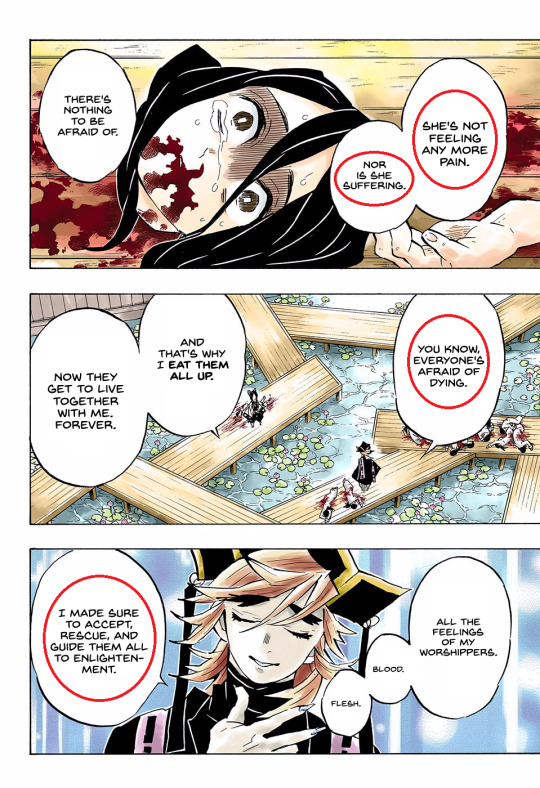
“This practice is for healing the mind, also overcoming fear of dying, also overcoming fear of what happens after death, or in other words after I’m gone from this world, what happens. Right? There’s big question mark for most people, I would say.”
When the Amitabha Faith came into popularity, the country was surrounded by violence. Due to a disparate difference in class at the time, many people were forced to live on the streets. The sides of major roads and the Kamo River were lined with bodies of those who lost their lives to famine and disease. In a world with nothing but suffering and hardship, the Amitabha faith offered the hope that at least in the afterlife they could be saved.
Throughout history, people of all cultures have asked the existential question, “Where do we go after we die?” A popular Buddhistic response to this question in medieval Japan was the western Pure Land (J. saihō jōdo) of the Buddha Amitabha (J. Amida). The idea of being born in a resplendent, distant paradise and envisioning departed loved ones there gave hope and solace to many facing the fear of death. These sentiments contributed to the popularity of Pure Land beliefs and resulted in the production of numerous raigō zu (“welcoming approach” paintings), in which Amitabha Buddha attended by a multitude of bodhisattvas appears before devotees at the time of their death, and jōdo zu (Pure Land paintings), which depict scenes of Amitabha’s paradise that awaits devotees after death.
The idea of rebirth into the Pure Land also gives great amounts of comfort to the dying, and the family members of the dying. Reciting the name of Amitabha Buddha “is a central element of death rituals” (Lopez 61). This “offers deathbed reassurance of a blessed afterlife” (Gach 220). Beings who are reborn into the Pure Land “suffer no bodily pain and no mental pain, rather they gain measureless causes for happiness” (Lopez 62). You can see how this idea of the Pure Land has gained popularity throughout Buddhist cultures as a means for helping followers to deal with death.
Amitabha as a savior figure and the fear of death
As a Buddhist who believes in the Pure Land teachings and trusts in the power of Amitabha to bring us to the pure land after death together with our own power of belief and devotion, genuine aspiration for enlightenment, I've found the Pure Land teachings to be very reassuring and calming to me. Whenever I hear about the next supposedly world ending event in the news, I remind myself that everything is impermanent, and should i die in one of these catastrophes or just die in general I can trust in the soteirological power of Amitabha to bring me to the pure land, and so dispel many of my worries and fears about death.
While I certainly do NOT want to die, and would be pretty damn pissed if I did die soon, this practice has helped me with my anxiety about death and reinforced my trust and faith in Amitabha. I wonder if anyone else has done this practice of recalling Amida Buddha's power and compassion when afraid of death, and if anyone else follows Amitabha as a savior figure, who will rescue from this cycle of death and rebirth and bring to his pure land any who accept him into their hearts and genuinely desire enlightenment? I find him a powerful and merciful savior figure and one of the three Bodhisattvas I venerate the most alongside Avalokiteshvara and Tara.
One of the answers:
I've never been afraid of death -- you might call me an annihilationist, since I came into the practice afraid of rebirth and the idea that if I didn't follow the path, I'd have to endure childhood again (which was not pleasant). But I also doubted Amitabha immensely, since I was raised in the Pure Land teachings and my parents weren't capable of answering any of my endless questions, I started to see Pure Land Buddhism as similar to the American Protestantism I was surrounded by: faith-based drivel.
The nature of Amitabha is not entirely clear. Encyclopedia Britannica describes him as "the great saviour deity worshiped principally by members of the Pure Land sect in Japan."
There was a belief that the world had degenerated to a point where humanity could no longer be delivered by its own effort and must rely on faith and on devotion to a powerful savior in order to be released from sin and suffering.
All-knowing and boundless, Amitabha is often regarded as the most powerful Buddha representing immeasurable light and life. Symbolising compassion, wisdom and kindness, Amitabha devotes his life to the enlightenment of all sentient beings, making it his mission to illuminate their paths of growth, success and prosperity.
Amitābha is the buddha of comprehensive love. He lives in the West (represented as a meditating Buddha) and works for the enlightenment of all beings (represented as a blessing Buddha). His most important enlightenment technique is the visualization of the surrounding world as a paradise. Those who see his world as a paradise awaken his enlightenment energy. The world can be seen as a paradise by a corresponding positive thought (enlightenment thought) or by sending light to all beings (wish all beings to be happy).
Pure Land Buddhists believe they will achieve enlightenment and Buddhahood through their faith in Amitabha Buddha and by reciting Amitabha’s name and vows.
“I dedicate this merit to all sentient beings
In order that they may attain full awakening
Through the merit of these acts,
May I quickly realise the state of Buddhahood
And having done so,
May I help all beings without exception
To reach that profound state.”

Amida Buddha built his Pure Land for the salvation of all human beings, with absolutely no discrimination against anyone. In this context salvation means birth in the Pure Land, the attainment of Enlightenment. When they enter the Pure Land, people become enlightened through the working of purification of the Pure Land itself.
In this teaching the attainment of Enlightenment or NirvAna is the ultimate goal. In this respect it is much closer to the notion of birth in the Pure Land, because the purpose of attaining birth in the Pure Land is nothing other than the attainment of Enlightenment. In Pure Land Buddhism, however, there is no longer the idea of transmigration between this world and heaven. It is abandoned. The only concern is the attainment of Enlightenment through birth in the Pure Land. Birth in the Pure Land is called birth of no birth [and no death]. The Pure Land is the world of Enlightenment where there is no birth and no death. Thus the Pure Land is also said to be the equivalent of NirvAna. Birth in the Pure Land means attaining Buddhahood.

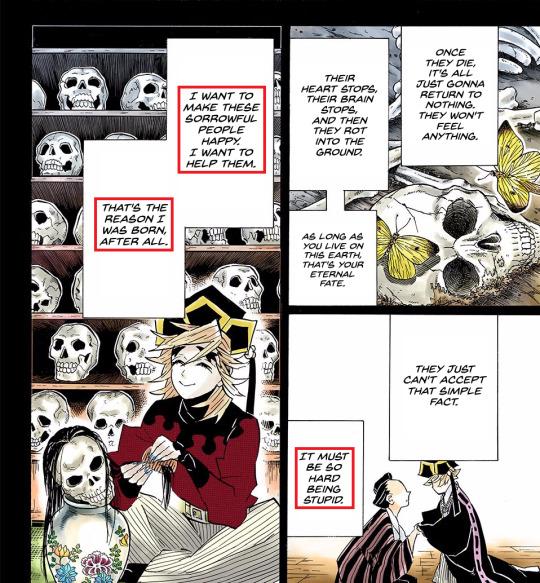

“Once I have attained perfect Buddhahood,
I shall free all sentient beings
From the ocean of Samsara's suffering
And lead them to the freedom of awakening.
For this purpose I shall practise
All the stages of the Bodhisattva's path.
May all beings be happy,
May they be free from suffering,
May they never be separated from their happiness,
And may they realise the state of equanimity,
Free from attachment and aversion.”
Amitabha’s 44 vow:

Amitabha’s 39 vow:

At that time the Buddha called Shariputra to him and said: “If you go from here in the western direction and pass through hundreds of thousands of millions of Buddha Worlds you will come to a world called Sukhavati (Great Happiness). In that world there is a Buddha whose name is Amitabha and who is at this very moment teaching the Dharma.
“Shariputra, why is that land called Great Happiness? Because the people who live there do not have to go through any suffering. They are always enjoying many kinds of happiness. And that is why that world is called Great Happiness.
As you probably know, “sukhavatiI,” the first half of Sukhavativyuha, means “land of happiness,” while the latter half, “vyuha,” means “adornments” or “embellishments.” Thus the literal translation of the title is “Embellishments of the Land of Happiness.” Amida’s Country is a place where everyone, once born there, can find happiness in various ways. As indicated by the title, the sutra describes, with rich Indian imagination, what a very happy land this is.
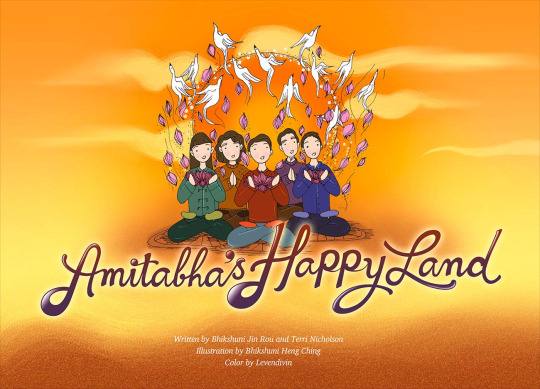
Amitabha is the Buddha of wisdom and compassion. He helps us to live a happy life and to die in peace. The beautiful illustrations in the book take you on a journey through Amitabha's Happy Land with jeweled trees and magnificent birds that sing Amitabha. He made a vow that whoever wishes to be enlightened need only recite his name to be reborn there. In this book, children learn how to recite Amitabha's name and plant a seed for a happy rebirth in the Pure Land. The ancient custom of reciting Amitabha's name carries a message of living life joyfully and accepting death as a natural part of life. With simple words and stunning artwork, this is a book to come back to time and time again.
Limitless Deliverance
Dharmakara takes as his first priority the deliverance of those beings who have the least capacity to leave world of suffering. The First Vow also indicates Amitabha’s compassionate wish to save all suffering beings first. He calls to them:
“All you wretched beings in the Hell Realm, the Hungry Ghosts Realm and the Animal Realms, please, aspire to be reborn in my land and let me take you across the ocean of suffering with my teaching. Then, you will soon become Buddhas.”
As said in the Adornment Sutra, another version of the Infinite Life Sutra:
“All you sentient beings in various realms of reincarnation—come to be reborn in my land and receive endless joy. My kind heart always exerts itself to rescue sentient beings from suffering, and to endlessly deliver all sentient beings in Avici Hell.”
“Various realms of reincarnation” are not restricted only to the hell realms, but also include the hungry ghost, animal, asura, human, and celestial realms. As ordinary beings, we are used to differentiating people by class, nationality, career, and so on. However, in the eyes of Amitabha, all beings are equal since we are all the targets of his compassionate deliverance.
Buddhism advocates great kindness, compassion, relieving others from suffering, and bestowing joy. These are perfectly demonstrated by Amitabha’s teaching of deliverance through his Name, the pristine Pure Land teaching.
We will be deeply moved if we know why Amitabha Buddha gives this vow first place in his master plan of deliverance. Dharmakara makes his priority the deliverance of sentient beings who suffer most and have the least capacity to leave the world of suffering because of their heavy karmic obstructions. Sentient beings may not know or care about the suffering of beings in these realms, but the buddhas do.
Without being asked, Dharmakara proactively made vows to save ordinary beings from reincarnation within the Six Realms as they are likely to fall into the Three Wretched Realms—the animal, hungry ghost, and hell realms—after death. Due to their ignorance, they are inexorably dragged there by their past karma under the Law of Causal Conditioning.
This vow draws the attention of ordinary beings caught in the cycle of birth and death within the Six Realms. It arouses their concern, triggers their intrinsic fear of suffering, and piques their interest to learn more about Amitabha’s Land of Bliss. As Dharmakara Bodhisattva, Amitabha Buddha wished to pacify their minds, and created an ultimate solution for them and all suffering beings.
The First Vow draws the attention of those who, like us, live in the defiled lands and are afraid of falling into wretched realms of suffering after death. The fear of losing our life (or the body of our present incarnation) is hidden deep in the minds of all ordinary beings, because it may happen at any time in the space of a breath.
Since this is the deep and profound concern of all iniquitous ordinary beings in the Six Realms, Dharmakara makes it his top priority to deliver sentient beings who suffer most and have the least capacity to leave the world of suffering because of their heavy karmic obstructions.
“By this effort, may all sentient beings be free of suffering.
May their minds be filled with the nectar of virtue.
In this way, may all causes resulting in suffering be extinguished,
and only the light of compassion shine throughout all realms.”
When Reverend Kuan Yen, the resident nun at Ding Gong Monastery in Quincy, Massachusetts, leads the chanting to Amitabha Buddha and Guanyin, the bodhisattva of compassion, she and the small group of lay members attending the weekly service hope to recite the sutras with such utter sincerity and faith that, after passing from this life, they will be reborn in Sukhavati, the Pure Land of Ultimate Bliss presided over by Amitabha. In this paradise, ten million billion Buddha Lands to the west of the earth, there is no suffering or hardship, only happiness, purity, and safety. The scenery there is spectacular, with precious stones scattered among gently rolling hills, water as sweet as nectar, and magnificent buildings where people gather to practice the Dharma.
The Amitabha Sutra - A Land of Joy without Suffering
Why is this land called Ultimate Bliss?
It is called “Ultimate Bliss” because the sentient beings in this land are free from the myriad sufferings common to mankind, and only know every kind of joy.
“Why is this land called Ultimate Bliss?” is the first question Sakyamuni Buddha posed.
When Sariputra respectfully did not respond, Sakyamuni began to describe the myriad wonders in the Pure Land, starting with its name. The name of the land is Ultimate Bliss because the sentient beings there have overcome their afflictions through mindfulness of Amitabha Buddha. No longer acting from greed, anger, and ignorance or from a mind that has wandering thoughts, discriminations, and attachments, the beings are always blissful. The name of the land reflects this great joy. Thus, the beings in that land are “free from the myriad sufferings common to mankind.”
There is no suffering from the process of birth because beings in the Pure Land are born from lotuses, not from the womb. There is no suffering from old age or sickness because the body is not composed of flesh, blood, and bones. There is no suffering from death for the lifetime in the Pure Land is infinite and concludes in buddhahood. Neither is there suffering of separation from loved ones because beings in that land have no attachments. There is no association with those that one dislikes because everyone is awakened. And there is no suffering from unfulfilled desires because should a being have the thought of something, it will appear naturally.
How to reach the Pure Land
• T’an-luan (the founder of Pure Land Buddhism in China) recommended five practices: reciting scripture, meditating on Amitabha and his paradise, worshipping Amitabha, chanting his name, and making praises and offering to him.
• As pure Land Buddhism developed, the most important practice became reciting Amitabha’s name.
• Pure Land Buddhism offers simple practice and the promise of receiving Amitabha’s help to reach enlightenment.
• This has helped the tradition gain a popular following.
He is worshiped thinking that one can have salvation.
“I make obeisance to Amitabha
The ruby-red Buddha
Of Infinite Light
Who sits in deepest samadhi
Upon a radiant red lotus throne.
To you, Amitabha,
I send forth the goddesses of worship:
Bearing pure sparkling water,
The rarest and most precious perfumes,
Beautiful flowers and pleasing incense,
Lighted lamps and perfumed balms,
Delightful and delicious foods,
And heavenly music which transports the mind”

“I confess whatever ways I have strayed,
Under the power of unawareness from
Amitabha's loving compassion.
I confess all deluded acts of body
I prostrate and give praise to Amitabha's body.
I confess all deluded acts of speech
I prostrate and give praise to Amitabha's speech.
I confess all deluded acts of mind
I prostrate and give praise to Amitabha's mind.”
“I could not understand why would any Buddhist convert to Christianity until I learned about Pure Land. Kinda depressing imo. Seems to confirm that this style of spirituality is not just some random thing that evolved in the Near East. If it emerged independently in East Asia with a completely different set of philosophical axioms, it probably is appears to reflect some sort of universal human drive to submit.
Actually Pure Land developed on the Silk Road, in which Buddhism encountered many religions, including Christianity. One of my old professors maintained the two were not just similar, but that Pure Land was in part an answer to Christianity in the Buddhist dialectic.
Pure Land Buddhism or Amidism, devotional sect of Mahayana Buddhism in China and Japan, centering on worship of the Buddha Amitabha. According to the Pure Land Sutras, composed in India in the 2d cent. AD, Amitabha vowed to save all sentient beings by granting them rebirth in his realm, the Western Paradise, a pure land endowed with miraculous characteristics ensuring its inhabitants easy entry into nirvana. Salvation could be attained by invoking the name of Amitabha with absolute faith in his grace and the efficacy of his vow. It was believed that Amitabha and his retinue would appear to the faithful at the time of death and convey them to his paradise.
In both China and Japan the movement gained impetus from the idea of the end of the Dharma, which divided the development of Buddhism into three ages: that of the true, the counterfeit, and the decaying dharma, that is, Buddhist teaching. Those living in the present final, degenerate age cannot attain enlightenment by the original means of self-effort, austerity, and superior knowledge and must rely entirely on faith. There were devotees of Amitabha in China as early as the end of the 3d cent. AD; the sect was officially founded in 402 by its first patriarch, Hui-Yuan. Later masters spread the faith among the masses, sometimes using evangelical methods, contrasting the torments of hell with the bliss of the Western Paradise.
The Buddha of Infinite Light, known in Japanese as Amida, presided over the Pure Land, the Western Paradise where the faithful could be reborn and gain release from an endless cycle of birth, rebirth, and suffering. Worship of Amida, which reached a peak during the Kamakura period (1185-1333), was promoted by the promise of salvation and also by the Japanese belief that mappo, the final period of decline of the Buddhist Law, had begun in the eleventh century.

“The result was a form of Buddhism accessible to anyone, even if they were illiterate or stupid.”
In Japan, Pure Land Buddhism was established as a sect by Honen (1133–1212), who taught that even those who had mastered Buddhist philosophy should behave themselves like simpleminded folk and renounce all practices except the nembutsu, recitation of the formula Namu Amida Butsu [homage to Amitabha Buddha]. His disciple Shinran (1173–1262) carried Honen's teachings to their logical conclusion by abandoning monastic celibacy and marrying. Shinran held that reliance on one's own effort or on any practice other than the nembutsu would show lack of faith in Amitabha. He broke with Honen's followers on these issues and became the leader of the True Pure Land Sect, which grew to be the largest Buddhist sect in Japan.
Amida (Amitabha) worship is the religious belief based on the Pure Land of Buddhism which believes in justification by belief and preaches that praying to Amida Nyorai would lead you to heaven. It is one of the Jodo Buddhist teachings, but it is a comprehensive belief that transcends sects and could be considered as a folk religion.
Amitabha Nyorai is revered in many Buddhist sects and Amida worship is a wide encompassing belief that is not restricted to one Buddhist writing, but does have an aspect that could easily fall into idol worship or a single-god (only Amida Nyorai is revered) type of thinking.
In medieval Japan, Shin teaching was open and freely available to those who had been excluded from the dharma—illiterate peasants, including women, and those whose livelihood involved impure activities, such as fishermen, hunters, butchers, prostitutes, and thieves. In fact, the popularity of this new teaching so threatened both the Imperial Court and the existing Buddhist establishment—which was scholastic, aristocratic, and monastic—that Honen, who founded the first independent Pure Land school in Japan in 1175—was exiled, along with his chief disciple, Shinran Shonin. Shinran susequently broke with tradition by marrying and raising a family, and establishing a truly lay Buddhist tradition.
Pure Land was a popularized form of Buddhism which preached that salvation could be attained through purely devotional practices, such as the chanting of sutras or brief devotional formulas, the worship of Buddha images, and financial contributions to temples. Pure Land represented a non-intellectual form of Buddhism that appealed most directly to the enormous and illiterate peasant population of China. It taught the poor that through devotion they could escape their lives of misery and be admitted after death to the Western Paradise, the “pure land” where one enjoyed eternal comfort and joy, free of the toils of “ samsara.
Amida worship was first introduced into Japan during the Nara period and mixed together with Miroku Bosatsu (Buddha of the Future, Bodhisattva of the Present) belief as ancestral worship. Later, as part of the flow of Mappo-shiso (the "end of the world" belief), it transitioned into Nenbutsu belief as Amida Jodo Shinko (Amida Buddha in the Pure Land worship) in which people wished to be saved and enter heaven by believing in Amitabha Nyorai.
The veneration of Amitabha represents a significant landmark in the history of Buddhism. It constitutes one of the simplest forms of Buddhist meditation, and for this reason became tremendously popular throughout Asia. The doctrinal basis for the worship of Amitabha, Buddha of the Sukahavati or "Pure Land," is in the Sukahavati-vyuha, a sutra first translated into Chinese in the year 147 CE, though the most famous translations are those by Kumarajiva (344-413) and Xuanzong (600-660 CE).
Amitabha worship made great strides in China during the fifth century, after gaining popularity in Central Asia in earlier centuries. It was particularly widespread among the uneducated, since it did not necessitate any profound knowledge of Buddhist doctrine. Instead, all that was required of practitioners was that they commit themselves to a very large number of repetitions of the name "Amitabha" while simultaneously invoking an inner vision of the Buddha seated in his Western Pure Land Paradise. Anyone who demonstrated his or her faith and total devotion to Amitabha would be granted rebirth in his Pure Land.
Painted images of Amitabha in his paradise provided practitioners with a model upon which to base their visualizations, and were based upon descriptions of the Western Pure Land found in the Sukahavati-vyuha and other sutras. Much like this mural from Cave 251, they usually depicted Amitabha lecturing before a lotus pond (souls of the faithful were reborn inside lotus blossoms), flanked by two attending Bodhisattvas, Avalokitesvara (who bears a miniature image of Amitabha in his headdress) and Mahasthamaprapta (whose headdress is often decorated with a small pagoda). Heavenly musicians and dancers fly above and around Amitabha, rejoicing in his goodness and compassion.
Beginning of the Amitabha Jodo Worship
The origins of Japanese Amitabha Jodo worship started when the last Japanese envoy to Tang Dynasty China, Ennin (794 – 864) of the Tendai Sect came back from Tang and brought Hosho school Nenbutsu of his training place, Mt. Wutai Shan, to Enryaku-ji Temple and built the Jogyo Zanmai-do Hall. The training here consists of chanting Shomyo Nenbutsu for 90 days without rest and thinking and praying about Amida Nyorai (Amitabha Tathagata) deep in the soul.
Thinking about the Amida Nyorai' was 'Kanso Nenbutsu,' the tangible meditative training to reach enlightenment, and was first accepted by the lower class aristocracy. At that time, the majority of important positions in aristocratic society were taken by the Fujiwara clan, hence members of other clans had to wait quietly for their slight chance of getting promoted. This way of living was said to match the feeling of Kanso Nenbutsu where one thinks and adores the image of Buddha.
YOSHISHIGE no Yasutane, a literati of that time who was also a middle class aristocrat, started the Nenbutsu kessha 'Kangakukai' and started to practice Jodo Sect religion.
YOSHISHIGE no Yasutane collected biographies of people who attained gokuraku ojo (peaceful death) by Amida worship and wrote the "Nihon ojo gokurakuki" (Japanese records of birth into the Pure Land).
Later, other books were written following the editing method of "Nihon ojo gokurakuki" such as "Zoku honcho ojoden" (Sequel to the Accounts of Rebirth into the Pure Land) (written by OE no Masafusa), "Shui Ojo-den" (written by MIYOSHI no Tameyasu) and "Sange Ojo-den" (written by Sami Rensho (沙弥蓮祥)).
Using specific actual examples to teach death was extremely effective in spreading the Jodo sect.
As the Jodo sect spread amongst the middle and lower class aristocracy, the Fujiwara clan who were the upper class aristocracy were affected and started to believe in the Jodo sect to take the glory of this life to the next life.
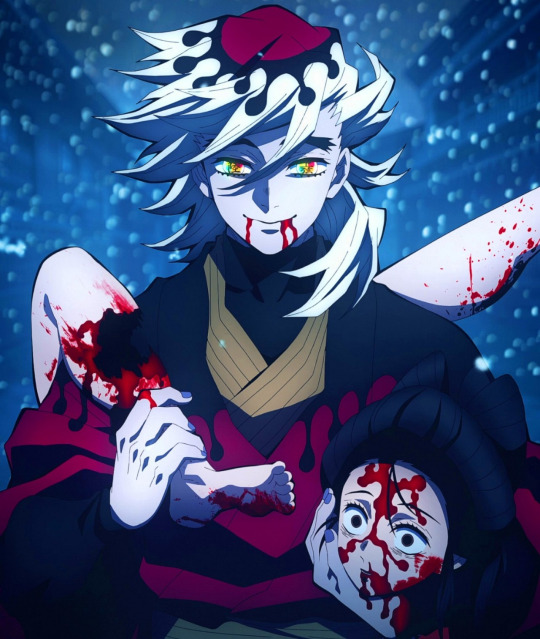

The text from the picture of Amitabha with white hair and red ushnisha is in chinese, so I had to appeal to google translate and it says it means "Guan Yin manifests/appears as Amitabha with white hair". I don't know if it's just a coincidence or if Gotouge knew that there's a manifestation of Amitabha with white hair, but I think it's worth pointing it out.
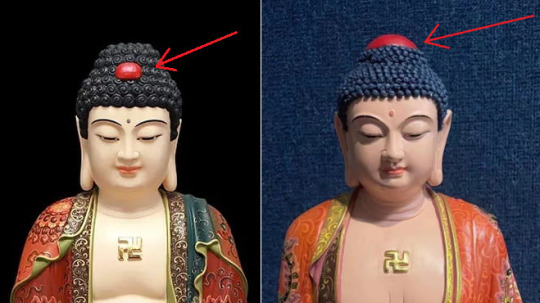
They are intended to symbolize the spirit of the Buddha—his realization and attainment as an ideal to be sought after—and often include features similar to the halos and other signs of spiritual power seen in Christian iconography.
The protuberance at the top of the Buddha’s head is known as the ushnisha, literally “turban.” This is one of the traditional thirty-two marks of the physical body of a buddha (some of which, if taken literally, would make him look pretty monstrous). The ushnisha appears as round, conical, pointed, or flamelike, depending on the sculptural tradition. Most commentators see it is a kind of crown, depicting regalness and the supreme power of the Buddha’s enlightenment. When it’s a flame, it is said to represent spiritual energy.
An ushnisha is the 3-D oval on top of the Buddha's head and indicates the wisdom of the Buddha.
One of the main reasons for this change may be, rather than symbolizing the crown of the royal family, the ushnisha is far better interpreted as symbolizing the spiritual power of the Buddha's enlightenment.
Three Dimensional Oval shaped on the top of Buddha that symbolizes the attainment of reliance in spiritual realm.


When Muzan turned Douma into a demon, he got a red stain on top of his red, which looks like Amitabha's red ushnisha, and he made Muzan the God of his cult religion because he felt so moved by this meeting. The ushnisha is a symbol of the buddha and they get it when they attain enlightenment. Douma got his red stain, this "fake ushnisha", when he met Muzan and attained demonhood, but he prabably thought this was true enlightenment, but since it's not true enlightenment, he didn't get a real ushnisha.
sweet dew (Skt amṛta) In ancient Indian lore, a wonderful sweet nectar that makes the drinker an immortal. In the Mahayana sutras, the teachings of the Buddha are often likened to such sweet dew.
(Skt) A legendary, ambrosia-like liquid. Often translated as sweet dew. In ancient India it was regarded as the sweet-tasting beverage of the gods. In China it was thought to rain down from heaven when the world became peaceful. The word “amrita” means immortality.

This Buddhist painting depicts a ritual in which Buddha ushers all beings to nirvana by giving them “sweet dew” or nectar called gamno (甘露), where the nectar represents Buddha’s teaching of enlightenment. In the Ullambana Sutra (于蘭盆經), one of the Buddha’s closest disciples, Maudgalyayana (目連尊者), found his deceased mother in one type of hell where ghosts are subjected to constant suffering through thirst and hunger. With the Buddha’s help and guidance, he rescued his mother by faithfully following Buddha’s teaching. Paintings like The Nectar Ritual were frequently produced to represent the wish that all the souls suffering from misfortune and disgrace from their previous lives could enlighten themselves by accepting Buddha’s teaching, and thus reincarnate as a superior being in their next life.
While most nectar ritual paintings feature an altar filled with food and a scene from a Buddhist ceremony, this painting dispenses with them. Instead, much of the painting is filled with vivid depictions of various types of karma and their resultant sufferings. The large hungry ghost dominating the center of the painting symbolizes the life of all sentient beings suffering from pain and misfortune. The top of the painting shows a group of Buddhas who seem to be descending to the human world to save the people.
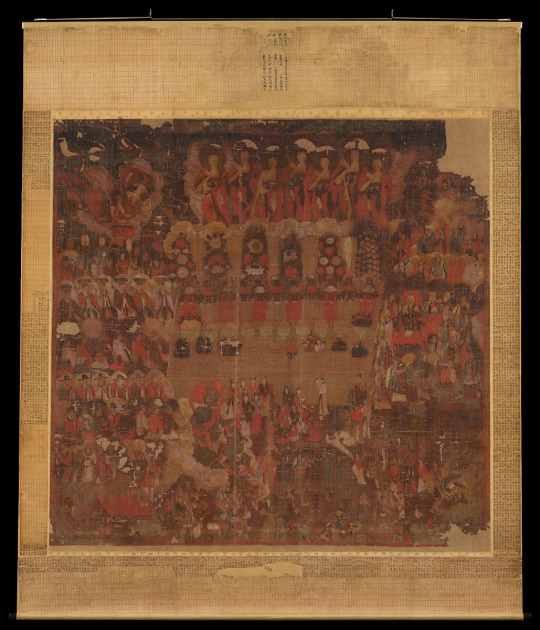
Saving Hungry Ghosts with Sweet Dew
Joseon, 16th century
This work is a rare example of a nectar ritual painting, depicting a Buddhist ceremony intended to save the souls of sentient beings who died in abject misery. A large congregation of wretched souls is gathered to hear preaching and receive offerings of flowers and food, which are arranged on the altar at the center of the painting. Some priests are presiding over the ritual, and in the upper part of the painting, seven Buddhas are approaching to deliver the souls. The painting dates to the early Joseon period, and it was donated by Ejima Kodo, the abbot of Ryuganji Temple in Kyoto, Japan.





Paintings of Amitābha Buddha (Gamrodo)
These paintings portray Amitābha Buddha leading the sentient beings from the hell realms to the Western Pure Land. Amitābha Buddha is depicted as the king of ambrosia or amṛṭa (which literally means "sweet dew"). Ambrosia, or nectar, signifies the teachings, which can relieve the suffering of sentient beings. This painting is also called theUllambana SūtraPaintingbecause it tells the story of Maudgalyāyana liberating her mother from suffering. This painting is sometimes hung on Spirit Altars. Thus, it is sometimes called the Painting of the Spirit Altar, the Ambrosia Painting, or the Magnificent Ambrosia Scroll Painting.
Amitabha has two titles: Ganlu (Sweet Dew) Buddha and Sweet Dew King.
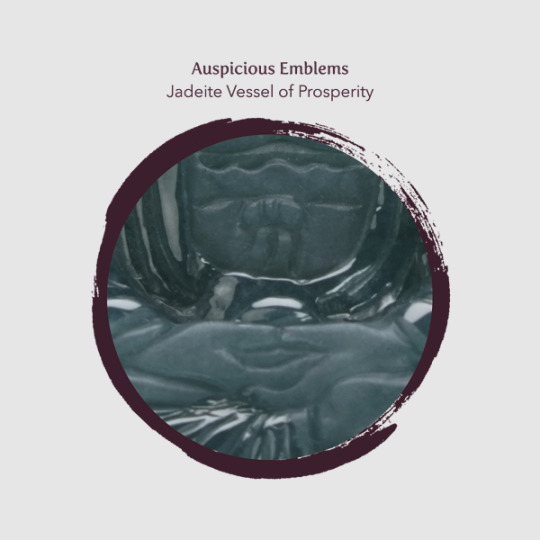
In Buddhist traditions, the Jadeite Vessel of Prosperity is an important artefact containing the divine nectar of immortality, which was used to induct those who had attained Buddhahood into the Land of Pure Bliss, thereby signifying the fulfilment of spiritual wishes.
The Jadeite Vessel of Prosperity rests in the palms of Amitabha Buddha, who uses this vessel to bless his destined devotees with auspicious luck in times of need so that they may immediately address any challenges or obstacles that hinder their paths to success.

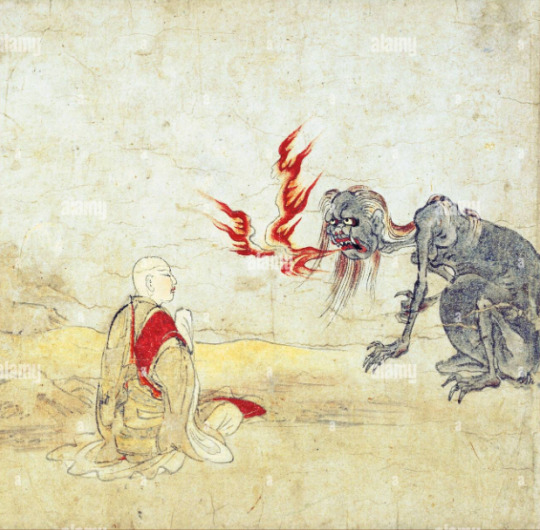
"Hungry ghost" is one of the six modes of existence (see Six Realms). Hungry ghosts are pitiable creatures with huge, empty stomachs. They have pinhole mouths, and their necks are so thin they cannot swallow, so they remain hungry. Beings are reborn as hungry ghosts because of their greed, envy and jealousy. Hungry ghosts are also associated with addiction, obsession, and compulsion.
'Envy is a hungry ghost with a pinhole mouth'
In Buddhist cosmology, one of the psychic domains that is described is the Realm of the Hungry Ghosts. The hungry ghost figures are depicted with scrawny little necks and huge bellies — riddled with powerful desires they can never really satisfy. Nearly everyone I know struggles with their own version of the hungry ghost syndrome.



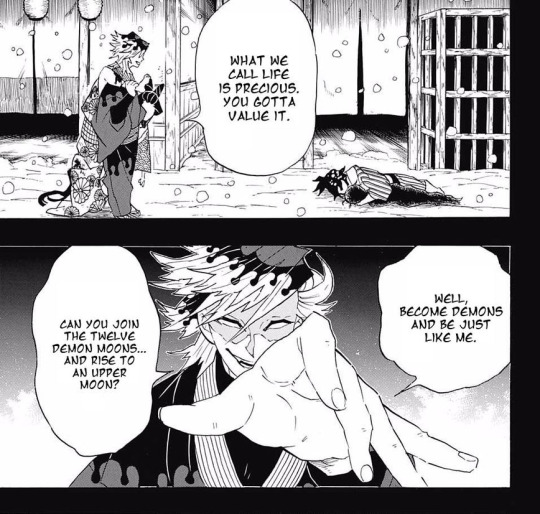
Considering that sweet dew is a substance of the Gods that grants immortality and satisfy hungry ghosts' hunger, it's not wrong to equate it to Muzan Blood. Muzan would take advantage of human desire and give his blood to people who couldn’t satisfy it in their human lives. Most of them were like hungry ghosts because they were consumed by negative emotions like greed, jealousy and envy like Gyutaro. In this sense, giving them Muzan Blood is like making a Sweet Dew Ritual.
Hungry ghosts are also the result of compulsions that couldn't satisfy a deeper desire. When Muzan gives Douma his blood, his hobbies are driking alcohol and smoking, so he was probably an addict. When Douma gives Gyutaro Muzan Blood, he's already deeply consumed by envy, at everyone who has anything better than him. Not only does Gyutaro acts exactly like a hungry ghost, he also looks like one.


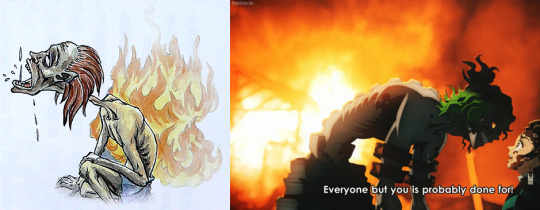
This is more like a peesonal theory of mine, but I think Gyutaro's design was inspired by the hungry ghosts to some extent. His characters is also all about envying everyone who has a better life or anything than him, which is a certain way to become a hungry ghost. There's even the popular saying "Envy is a hungry ghost with a pinhole mouth". His grayish skin tone and scrawny body makes him look a lot some hungry ghosts I saw in the pictures. He was given Muzan Blood by Douma in what looks like a Sweet Dew Ritual to save hungry ghosts, if you equate Muzan Blood with sweet dew. He also put The Red Light District on fire and made it look like hell, and the many pictures depict hungry ghost in a fiery hell. It's also worth noting that hungry ghosts are also often depicted burning/on fire and Daki was burned alive.
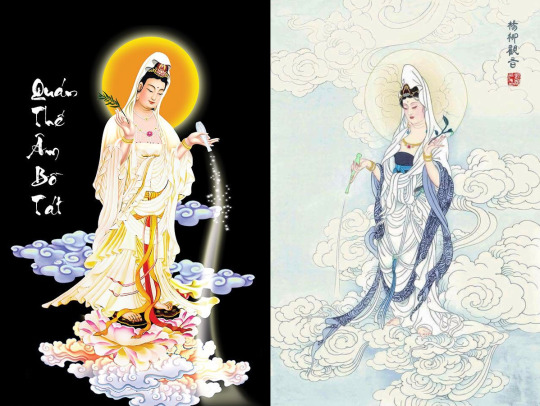
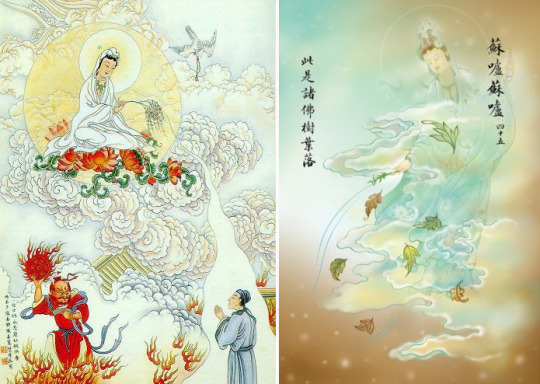

Back to the main topic, the White Blizzard Princesses. So I already stablished that the "giant buddha" was actually Guan Yin, one of the white blizzard princesses, and that the freezing air was the sweet dew she sprinkles everywhere from her vase and willow brach. You could say that the white blizzard princesses are a smaller version of the water lily bodhisattva. But what about Mashthamaprapta? Well, both are Amitabha's attendants, who is known as the king of sweet dew, used to be princesses, are dressed in white in many depictions and are said to be identical except for a few ornaments so both should have the same competences.


Concealed in Seishi's head-dress, behind his diadem but before his ushnisha, stands a kanro-byo, or nectar-vase, of gold containing the amrta, or elixir of immortality. Seishi is sometimes given the epithet Son of the Moon, and this establishes his relationship to Candra, the Hindu moon-god, who also dispenses the soma, or nectar of deathlessness, from his lunar cup.
On the completion of the Ascending Realization, when Kundalini, the Serpent Power, rises from the muladhara chakra, or lowest centre, to the sahashrara-padma, or Thousand-Petalled Lotus at the crown of the head, the amrta spills over and flows down again to the Heart-centre, or anahata-cakra, in the bliss of Descending Realization. The overflowing of the kanro, or elixir, from Seishi's vase forms the Mahayana counterpart of this and provides the joy felt by the Bodhisattva on making his Vow to return to this world to rescue all sentient beings.
The bodhisattva is identified by the nectar vase in the open work tiara.
Mystery solved. Seishi/Mahasthamaprapta has a vase filled with sweet dew in their tiara, which looks exactly like Guan Yin's, and they sprinkle the sweet dew inside it to the entire physical realm, also exactly what Guan Yin does. So it's not hard to see why they're paired with Guan Yin as a White Blizzard Princess, it might not just be about them looking the same.

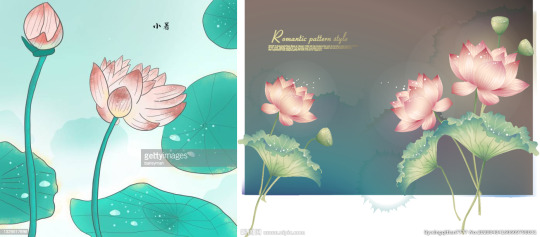

Lotus Ice
After all this research, I've started to think that the particles or fog coming out of ice lotus flowers is actually sweet dew. Amitabha, known by many as the king of sweet dew, is almost always depicted holding a lotus flowers. And apparently Kṣitigarbha or Ti-tsang, another bodhisattva like Guan Yin and Seishi, was able to make sweet dew flow out of a lotus to feed hungry ghosts.


According to this, there's a "mudra/mantra of sweet dew" that if performed any monk can turn normal water into sweet dew. But Douma seems more than just a normal monk, he seems to be a parody of Amitabha, who's almost always portrayed carrying a lotus flower and is known as the king of sweet dew.


Amitabha's vessel of sweet dew he has in his hands, which grants immortality, is almost always portrayed as a lotus flower. The bodhisattvas can make it rain sweet dew in the entire realm and it makes the plants wet with sweet dew.




When I search for sweet dew(甘露), I'm very often greeted by poctures of lotus flowers and other plants, many times with "甘露" written somewhere in the picture. It also almost always happens when the article is explaining the mantra of the sweet dew/nectar.








The first site about the nectar/sweet dew mantra translated it as "dandruff nectar", but other sites translate as "corns of nectar". Both terminologies can work with Douma's Lotus Ice because Shinobu described it as a fog, but it looks like corns of something. The sites say that any practitioner of Pure Land Buddhism can turn water into sweet dew with this mantra. Bodhisattvas can make it rain sweet dew and it wets the flowers and normal people can turn water into sweet dew/nectar and plants are a great source of water and nectar.

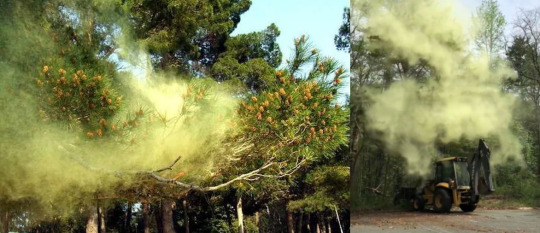

If it's not sweet dew, it could be pollen. The pollen produced by plants looks like dandruff, if you look at the first picture. Some plants unleashes massive pollen clouds that can engulf an entire city and it can be deadly for people with pollen allergy. But the huge pollen clouds unleashed by plants remind me of Douma's fog of freezing air.
And now spoilers for Naruto:

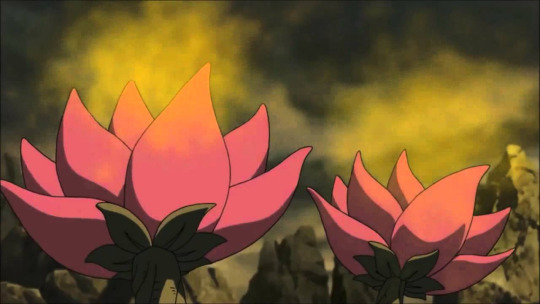


Gotouge was inspired by many shounens when making KnY and one of the inspiration was very likely to be Naruto. There's a very important character from Nature who has long hair, is dressed in red and whose main purpose was creating a place without war where all ninja clans could live in harmony. This place was later called Hidden Leaf Village. This reminds me of Amitabha, in a good way, because he also dresses in red and created a paradise called Pure Land where the sufferers would not suffer anymore.
But most importantly, Hashirama's attacks are based on buddhism elements. This featured attack above is called "wood style: deep forest bloom" and unleashed, lots of lotus flower appear and realease pollen everywhere. When that happens, you can't get close to the person who unleashed it because of the pollen. A similar situation to Kanao not being able to get too close to Douma for long because of the freezing air happened in the Naruto manga/anime when the villain Madara used it against the good guys the 5 kages, they had to keep their distance.

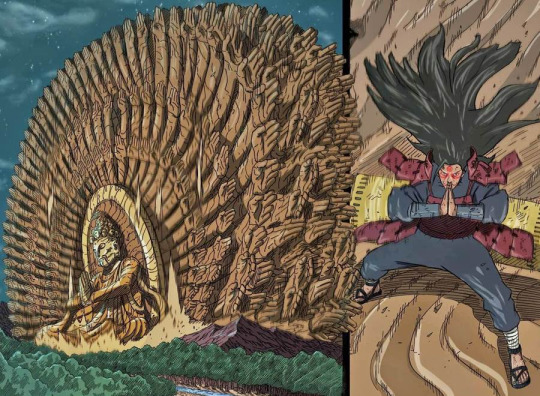



It's worth noting that, much like Douma, Hashirama can also summon Guan Yin, but her evolved form "The One Thousand Armed Guan Yin", not her basic form that Douma summons. And since this is a series from Japan, Guan Yin is addressed as Kannon, so it's One Thousand Arms Kannon" or "Senju Kannon(千手観音)". Hashirama seems like a healthy inspiration from Amitabha. Douma and Hashirama even have the same MBTI and enneagram(ENFJ 7w6 729 so/sx). Netero from Hunter x Hunter can also summon Guan Yin/Kannon, so you can see that most characters who summon her are great heroes and it's very uncomfortable to see such a villanous character summon her.
#doma#douma#kny doma#kny douma#kimetsu no yaiba douma#kimetsu no yaiba doma#gyutaro#muzan kibutsuji#kotoha hashibira#pure land buddhism#amitabha#guan yin#guanyin#kuan yin#avalokiteshvara#mahasthamaprapta#naruto shippuden#hashirama senju#madara uchiha
213 notes
·
View notes
Text
Assorted LMK headcanons cus im busy with new years stuff rn;
Macaque will deliberately use australian slang he's learned from Jade-Face and the Gold & Silver twins to torment Wukong. Especially if done in a fake aussie accent, he loves the pained look on Wukong's face as he tries to decipher what the heck Mac just said.
Red Son was a LOUD baby. Like, crying all the time colicky baby. PIF and DBK had many a sleepless, self-hating nights thinking they were doing something wrong. Later it was discovered that hosting the Samadhi Fire was like an intense chronic pain for baby Red. One of the reasons he lashed out at others as a toddler was because he was in physical pain from the power affixed to his tiny-underdeveloped soul. Once the Samadhi Fire was removed, Red Son canonically knocked straight to sleep - chronic pain do be making you sleepy.
+Sadly this also means that Ao Lie was riddled with chronic burning joint pain in his later life from absorbing a fourth of the Fire. He was very good at hiding it. Mei starts to develop odd burning aches in her mid-twenties and isn't sure why.
Princess Iron Fan and Demon Bull King did in fact have a huge break-up/separation prior to his imprisonment. It was a arguement over Red Son being trained in the Southern Ocean by Guanyin. DBK wanted to tear the place apart to get his son back and begin the glorious expansion of their domain. PIF knew that this wouldn't go down well with Heaven and the Bodhisattvas, and argued that they could just ask for Red Son and... settle down together, no royal fixings required (hmm, parallels to another pairing anyone >:3?). Be a happy old couple outside the Flaming Mountain. But DBK didn't want that (at least right then), he wanted the world to recognise that his family had been done great injustices by Heavens and others for too long. He wanted his Queen to recieve even a tenth of her birthright as a Celestial Princess, and wanted his child to be recognised as an heir of the Jade Throne. As her husband charged off to make his intentions known to the world; PIF called up a certain monkey to do something she would regret for many centuries to come...
PIF is a lot more perceptive of the cruelty that the Heavens can bestow than she lets on.
If Spider Queen had kept her husband captured on New Years for even a minute longer, than PIF would have called up old contacts to bring the wrath of the Buddha onto her. She didn't appear in-story because she was busy organising a raid party.
+Also the reason why nobody in the Celestial Realm said anything/pretended not to notice when the MKrew showed up. Many of the guards were on standby if the Spider Queen decided to do her own Havoc in Heaven once she had SWK captured. A lot of the royal family was hiding in their own palaces waiting for an all-clear.
#lmk hcs#lmk headcanons#lmk#lego monkie kid#l#lmk aus#lmk pif#lmk princess iron fan#lmk dbk#lmk demon bull king#lmk red son#lmk demon bull family#the monkey king and the infant au#the monkey king and the infant#also applies to my tmkati au#lmk ao lie#lmk mei#long xiaojiao
42 notes
·
View notes
Text

Falling In Love With The Earth
This beautiful, bounteous, life-giving planet we call Earth has given birth to each one of us, and each one of us carries the Earth within every cell of our body.
We and the Earth are one
The Earth is our mother, nourishing and protecting us in every moment–giving us air to breathe, fresh water to drink, food to eat and healing herbs to cure us when we are sick. Every breath we inhale contains our planet’s nitrogen, oxygen, water vapor and trace elements. When we breathe with mindfulness, we can experience our interbeing with the Earth’s delicate atmosphere, with all the plants, and even with the sun, whose light makes possible the miracle of photosynthesis. With every breath we can experience communion. With every breath we can savor the wonders of life.
We need to change our way of thinking and seeing things. We need to realise that the Earth is not just our environment. The Earth is not something outside of us. Breathing with mindfulness and contemplating your body, you realise that you are the Earth. You realise that your consciousness is also the consciousness of the Earth. Look around you–what you see is not your environment, it is you.
Great Mother Earth
Whatever nationality or culture we belong to, whatever religion we follow, whether we’re Buddhists, Christians, Muslims, Jews, or atheists, we can all see that the Earth is not inert matter. She is a great being, who has herself given birth to many other great beings–including buddhas and bodhisattvas, prophets and saints, sons and daughters of God and humankind. The Earth is a loving mother, nurturing and protecting all peoples and all species without discrimination.
When you realize the Earth is so much more than simply your environment, you’ll be moved to protect her in the same way as you would yourself. This is the kind of awareness, the kind of awakening that we need, and the future of the planet depends on whether we’re able to cultivate this insight or not. The Earth and all species on Earth are in real danger. Yet if we can develop a deep relationship with the Earth, we’ll have enough love, strength and awakening in order to change our way of life.
Falling In Love
We can all experience a feeling of deep admiration and love when we see the great harmony, elegance and beauty of the Earth. A simple branch of cherry blossom, the shell of a snail or the wing of a bat – all bear witness to the Earth’s masterful creativity. Every advance in our scientific understanding deepens our admiration and love for this wondrous planet. When we can truly see and understand the Earth, love is born in our hearts. We feel connected. That is the meaning of love: to be at one.
Only when we’ve truly fallen back in love with the Earth will our actions spring from reverence and the insight of our interconnectedness. Yet many of us have become alienated from the Earth. We are lost, isolated and lonely. We work too hard, our lives are too busy, and we are restless and distracted, losing ourselves in consumption. But the Earth is always there for us, offering us everything we need for our nourishment and healing: the miraculous grain of corn, the refreshing stream, the fragrant forest, the majestic snow-capped mountain peak, and the joyful birdsong at dawn.
True Happiness is made of Love
Many of us think we need more money, more power or more status before we can be happy. We’re so busy spending our lives chasing after money, power and status that we ignore all the conditions for happiness already available. At the same time, we lose ourselves in buying and consuming things we don’t need, putting a heavy strain on both our bodies and the planet. Yet much of what we drink, eat, watch, read or listen to, is toxic, polluting our bodies and minds with violence, anger, fear and despair.
As well as the carbon dioxide pollution of our physical environment, we can speak of the spiritual pollution of our human environment: the toxic and destructive atmosphere we’re creating with our way of consuming. We need to consume in such a way that truly sustains our peace and happiness. Only when we’re sustainable as humans will our civilization become sustainable. It is possible to be happy in the here and the now.
We don’t need to consume a lot to be happy; in fact we can live very simply. With mindfulness, any moment can become a happy moment. Savoring one simple breath, taking a moment to stop and contemplate the bright blue sky, or to fully enjoy the presence of a loved one, can be more than enough to make us happy. Each one of us needs to come back to reconnect with ourselves, with our loved ones and with the Earth. It’s not money, power or consuming that can make us happy, but having love and understanding in our heart.
The bread in your hand is the body of the cosmos
We need to consume in such a way that keeps our compassion alive. And yet many of us consume in a way that is very violent. Forests are cut down to raise cattle for beef, or to grow grain for liquor, while millions in the world are dying of starvation. Reducing the amount of meat we eat and alcohol we consume by 50% is a true act of love for ourselves, for the Earth and for one another. Eating with compassion can already help transform the situation our planet is facing, and restore balance to ourselves and the Earth.
Nothing is more important than brotherhood and sisterhood
There’s a revolution that needs to happen and it starts from inside each one of us. We need to wake up and fall in love with Earth. We’ve been homo sapiens for a long time. Now it’s time to become homo conscius. Our love and admiration for the Earth has the power to unite us and remove all boundaries, separation and discrimination. Centuries of individualism and competition have brought about tremendous destruction and alienation. We need to re-establish true communication–true communion–with ourselves, with the Earth, and with one another as children of the same mother. We need more than new technology to protect the planet. We need real community and co-operation.
All civilisations are impermanent and must come to an end one day. But if we continue on our current course, there’s no doubt that our civilisation will be destroyed sooner than we think. The Earth may need millions of years to heal, to retrieve her balance and restore her beauty. She will be able to recover, but we humans and many other species will disappear, until the Earth can generate conditions to bring us forth again in new forms. Once we can accept the impermanence of our civilization with peace, we will be liberated from our fear. Only then will we have the strength, awakening and love we need to bring us together. Cherishing our precious Earth–falling in love with the Earth–is not an obligation. It is a matter of personal and collective happiness and survival. – Thich Nhat Hanh.
Written for Paris Climate Talk in 2015
***
18 notes
·
View notes
Text
Journey to the West Chapter 24
Tripitaka being offered three day old infants the Ginseng fruit:

This chapter of Journey to the West with @journeythroughjourneytothewest we get to see the sequel to Sun Wukong Steals some Important Fruit, so lets get into it shall we?
So we start this chapter where we left off last time, with Pigsy tied to a tree screaming while Monkey laughs at him. Luckily for Pigsy, Sandy decides to take pity on Pigsy and untie him. Monkey then clues Pigsy in on the fact that the ladies of that house were all actually Bodhisattva's, and even Sandy gets in on ribbing on Pigsy saying how lucky he is that four Bodhisattva's came here to be his wife. While Pigsy begs them to never mention this again and in exchange he will carry the luggage without complaint. Tripitaka decides to take him up on this deal and they all move on.
So the group continues their travel through a beautiful mountain that is so wonderful Tripitaka wonders if they are getting close to the Thunderclap Monastery. Monkey however says they aren't even close to Thunderclap Monastery but does agree that some immortal or something probably lives here.
So we make a scene cut for some exposition and learn that this place is called Long Life Mountain and that an immortal Daoist Master named Zhenyuan runs an abbey called Five Villages Abbey. And that they have a fancy tree that takes 3000 years to grow, another 3000 years to bear fruit, and yet another 3000 years for that fruit to ripen. There were only 30 of these fruits and they happen to be shaped like 3 day old infants. And that even smelling one make a person live for 360 years and eating one would grant them forty seven thousand years. We also learn that Zhenyuan is out on business, but that he remembers being friends with Tripitaka in his previous incarnation as the Golden Cicada. So he tells his two disciples, Clear Breeze and Bright Moon to offer Tripitaka hospitality when he passes through here, and also to give him two ginseng fruit, but no more then two. He also warns them that Tripitaka's disciples might be unruly so they shouldn't tell them about the fruit.
So we cut back to the adventuring party who have just arrived at the Abby and are greeted by Clear Breeze and Bright Moon. So Tripitaka gives each of his disciples a task while he settles down and has some tea with Clear Breeze and Bright Moon. After the two confirm that Tripitaka is indeed the person their master told them to be on the look out for the two leave to go fetch the ginseng fruit. They do this by striking the tree with a golden hammer and catching the fruit on a wooden tray that is covered in silk handkerchiefs. They then offer the fruit to Tripitaka.
Tripitaka however is horrified by the fact that they look like three day old infants and doesn't believe them when they tell him they are ginseng fruit and absolutely refuses to eat them. So the two take it away, and since the fruit goes bad quickly, eats the two fruits themselves.
Pigsy however overhears this exchange and becomes desperate to try a fruit for himself. And he decides that the best way to accomplish this will be to rope in professional fruit thief Sun Wukong into his scheme. So Pigsy tells Monkey that there is some ginseng fruit here, and Monkey agrees to steal some for all of them. Pigsy also mentions that they used a gold mallet to knock the fruit down.
So Monkey sneaks into the Daoists room and steals the mallet easily since the two Daoists had returned to Tripitaka, he then makes his way to their very impressive garden. So Monkey makes his way to the ginseng tree and climbs up it before using the golden hammer to make one of the fruits drop. Monkey climbs down to look for it, but the fruit has completely vanished. Thinking that the local garden spirit must have stolen it, Monkey makes a magic sign to summon them.
The spirit greets Sun Wukong, and Sun Wukong accuses them of stealing the fruit from him. The Spirit however claims he didn't take it and explains that the fruit is resistant to the five phases. Meaning that the fruit will fall when it encounters gold, will wither when it encounters wood, will melt when it encounters water, will dry up if it encounters fire and will be assimilated when it encounters earth. So when the fruit touched the ground when Sun Wukong knocked it down, it was assimilated into the ground and that's why they need the tray to be cushioned by silk handkerchiefs. The spirit also points to the spot where the fruit was absorbed and says that that part of the garden will now last 47000 years. He even invites Sun Wukong to strike at the ground to see for himself. Which Sun Wukong does so, striking it with his staff, and does no damage at all. Sun Wukong then admits he was mistaken in blaming the spirit and lets them go.
Now that Monkey knows the trick to it, he uses the golden hammer to knock the fruit down once again, but this time he catches it using his silk shirt. Once he's collected three fruits, he goes back to Pigsy, they also call Sandy over to have a fruit to. Sadly the horse isn't invited and doesn't get any fruit. Sandy is actually able to recognize the fruit for what it is since he's seen it before while he was working for the Jade Emperor and someone gave some to the Queen Mother as a birthday gift, but of course he's never eaten one before. So the three of them settle down to eat their fruit, and Pigsy being a glutton, eats his in one bite. Which then leads to him trying to get Monkey and Sandy to share their fruits with him or get him another one. Monkey tells him to be grateful he even got the one, and casually tosses the golden mallet into the adjacent room.
Pigsy is still complaining however when the two Daoist's happen to be passing by to fetch more tea for Tripitaka. Hearing Pigsy mention the Ginseng fruit the two immediately become suspicious that he might have stolen one. They also notice the golden mallet has been moved. So the two rush out to the tree and discover that four fruits are missing.
So the two rush back to Tripitaka and immediately start berating him and hurling all sorts of abusive language at him before he can even get a word in edgewise. Finally Tripitaka manages to get them to say more clearly that they think he stole the Ginseng Fruit. Tripitaka however points out that he was horrified by that fruit earlier, so why would he steal it? So the two point out that while he might not have stolen them, his disciples might have, which Tripitaka concedes is a fair point.
So Tripitaka calls his disciples out in order to get to the truth to the matter to see if they need to repay these guys or at the very least apologize to them. The three of them hear Tripitaka calling and all decide to get their stories straight- by denying everything. Guess we'll see how that works out for them next chapter.
Current Sun Wukong Stats:
Names/Titles: Monkey, The Stone Monkey, The Handsome Monkey King, Sun Wukong (Monkey awakened to the void), Bimawen (Banhorseplague), The Great Sage Equal To Heaven and Pilgrim Sun.
Immortality: 5 + 47,000 years.
Weapon: The Compliant Golden Hooped Rod
Abilities: 72 Transformations, Cloud-Somersault, Ability to transform his individual hairs, super strength, Ability to Summon Wind, Water restriction charm, and the ability to change into a huge war form, ability to duplicate his staff, ability to immobilize others, the ability to put others to sleep, and the Fiery eyes and Diamond Pupils, intimidating horses, churning large bodies of water, sleeplessness, seizing the wind, enhanced smell, discerning good and evil within a thousand miles and Spirit Summoning.
Demon Kill Count: 4+ Unknown Number of Minions
Human Kill Count: 6
God's Defeated: 19 + Unknown number
Defeats: 3
Crime List: Robbery, Murder, Mass Murder, Arson, Theft, Coercion, Threatening a Government Official, Resisting Arrest, Assault, Forgery, Employee Theft, False Imprisonment, Impersonating a Government Official, Treason, attempted murder, failure to control or report a dangerous fire, desecrating a corpse, breaking and entering and trespassing.
Cry Count: 3
Mountains Trapped Under: 1
Current Tang Sanzang stats:
Names/Titles: River Float, Xuanzang, Tang Sanzang, Tripitaka
Abilities: Curing Blindness, making branches point a certain direction (allegedly), reciting sutras, pretty privilege, memorization and Heart Sutra.
Cry Count: 14
Tight Fillet Spell Uses: 5
Paralyzed by fear: 4
Bandit Problems: 2
Kidnapped by demons: 2
Falling Off Horses: 5
Current Bai Long Ma Stats:
Names/Titles: Bai Long Ma (White Dragon Horse), Prince of the Western Ocean, and third prince jade dragon of the dragon king Aorun
Abilities: Transforming into a human, a water snake, and a horse, eating a horse in one bite, and flight.
Crime List: Arson, and Grave Disobedience.
Contributions to the plot: 1
Current Zhu Wuneng Stats:
Names/Titles: The Marshal of the Heavenly Reeds, Zhu Wuneng (Pig who is aware of ability), Zhu Ganglie, Pigsy, Idiot and Eight Rules.
Weapon: Rake
Abilities: 36 Transformations, parting water, fighting underwater and cloud soaring.
Demon Kill Count/Kill steals: 1
Failed Flirtation/romances Attempts: 3
Cry Count: 1
Crime List: Sexual Harassment, Murder, Kidnapping and arson.
Current Sha Wujing Stats:
Names/Titles: The Curtain-Raising General, Sha Wujing (Sand Aware of Purity), Sandy and Sha Monk
Weapon: Monster Taming Staff
Abilities: Fighting underwater
Crime List: Breaking a Crystal Cup, murder, and desecration of a human corpse.
#jttw#journey to the west#jttw read through#journeythroughjourneytothewest#sun wukong#tang sanzang#zhu wuneng#sha wujing#Monkey is revisiting his greatest crime hits by stealing important fruit again#Tripitka needs to invest in some child leashes for his disciples
9 notes
·
View notes
Text

An Invitation to The Forest
~ Patrul Rinpoche
All alone, accept this invitation to depart for the quiet of the forest,
Go there to accomplish single-pointed meditation-
These delightful mountain solitudes,
Are like a family estate for serious practitioners,
And as the Enlightened One, the best of protectors himself has said,
"To rely on solitude is indeed the pinnacle of joys!"
Forests, hermitages and isolated dwelling places-These are the outer solitude of the Enlightened One's heirs.
Avoiding selfishness and faint-hearted fears-This is the bodhisattvas' internal isolation.
Keeping, therefore, to outer forms of solitude, Tame the inner afflictions through tranquillity and insight, And aspire to the supreme conduct of the disciplined ones
Possessing such good fortune one is truly the Buddhas' heir.
With its sweetly cascading mountain streams, Rocky mountain shelters ascending to heaven, And gently falling dew drops of whitest moonlight-This mountain retreat surpasses even the realm of angels..
The dance of the slender trees does not stir the passions, And sweet birdsongs bring neither attachment nor aversion,
Enveloped in non-conceptuality's gentle, cooling shade-
Such youthful companionship is surely better than a silent void!
Undisturbed by noisy chatter, that thorn in meditation's side,
Alone in this excellent place of unattended solitude, The old monkey of the mind has nowhere left to roam, And so, settling down within, finds its satisfaction.
Under the bright oppressive sunlight of busy, bustling crowds,
Our own faults and unhelpful thoughts eclipse the constellations,
But when embraced by threefold solitude's cooling nectar beams,
Such faults can easily be overcome through the proper antidotes.
When it's undisturbed by rippling thoughts of sadness, The pool-like surface of the mind is still, unmoving, And faith and compassion's reflections readily arise, In such constancy, what need is there for a companion?
If the mirror of mind is wiped clean, time and again,
And uncluttered with objects and circumstances,
Study, reflection and meditation present a clear impression,
And what is there to prevent the dawn of Dharma's light?
Hunger, thirst, cold and the like-all forms of physical affliction,
Together with sadness, fear and all such mental suffering,
Can, through the teachings, enhance the purifying path,
And, unburdened by avoidance or indulgence, adorn the mind!
The pleasures of the five senses, longed for by the foolish,
Are not to be found in solitude as they are among the devas,
But joys of Dharma in their hundreds, lauded by the wise,
Are more abundant in a lonely forest than in all of heaven.
To the bodhisattva who sees suffering as a spur to diligence
There is nothing that could conflict with Dharma practice.
Should a hundred or a thousand demonic hordes arise as foes,
How could they affect the wise for whom adversities are allies?
Savouring the fine fruit of the teacher's nectar-like instructions,
Do not chase after the hollow, husk-like words of the scholars;
Seeking the bright luminescence of the bodhisattvas' compassion,
Do not long for the flickering lights of ordinary conversation.
Like a smith skilfully taming and ornamenting the mind,
With no need for the many tools of varied fields of knowledge,
It's enough to take up the blade of renunciation and compassion,
Thereby to transform a negative character's stubborn hide.
A single nectar shower of the teacher's compassion,
Can cause the ripening crop of qualities to grow,
As the clouds of devotion amass again and again,
And there's no need to fear an untimely frost.
Love and affection are all the greater For friends, teachers and family living far away, But it's hard to feel so when they're close by,
As intimacy incites only irritation!
Faith and compassionate love, cultivated in solitude,
For the lofty, the lowly and all those in between,
Tied to enlightened action with the rope of aspiration,
Will never come undone throughout one's future lives.
Forget bliss and clarity, they're just temporary highs!
Cultivate emptiness of which compassion is the essence,
And your own and others' welfare is assured, it is said.
Even a hundred years of exertion born of expectation for reward,
Will only postpone the supreme accomplishment, we're told.
But on the path of the six paramitãs free from the seven attachments,
Even without enlightenment in this lifetime, there'll be no regret!
First you met a supremely qualified guide, Then you felt renunciation and joy for the Dharma,
And now you're meditating in woodland solitude,
O my fortunate friend, you're fortunate indeed!
I met noble masters, but failed to follow them properly,
Whatever Dharma I train in, I don't apply it to my mind,
I took to solitude, but couldn't be diligent or undistracted,
Turning into an old dog like me means remaining malign!
My friend, you've set out on the way to every happiness,
But as you tirelessly cultivate diligence and devotion,
Be ever watchful, alert for the demon of arrogant pride,
And your life will end happily too-do you understand?
Not ruining the mind with false visions of deities or demons,
But furnishing it with the treasures of jewel-like qualities,
May you follow in the footsteps of the great Bodhisattvas.
This is my prayer: Protector, please bear witness!
Even if I should die and descend into the lower realms,
There'll be a time when l'm freed through remembering the kindness of my teacher's instructions,
Then, I pray, may I continue to uphold supreme enlightened action
For as long as beings, I too still remain to dispel the misery of the world!
These sincere words, which arose like a rainbow from my mouth,
Were offered from the mountain solitude in order to dispel the sadness of a dear, likeminded friend.
May their meaning soon become apparent!
~ Patrul Rinpoche
#buddha#buddhist#buddhism#dharma#sangha#mahayana#zen#milarepa#tibetan buddhism#thich nhat hanh#Padmasambhava#Guru Rinpoche#Longchenpa#four noble truths#amitabha buddha#dzogchen#dilgo khyentse rinpoche#Dzambala#Manjushri#vajrasattva#vajrapani#Bodhisattva#medicine buddha#Buddha Samantabhadra
6 notes
·
View notes
Text
Chapter 16 Recap: At Guanyin Hall the monks plot for the treasure; At Black Wind Mountain a monster steals the cassock
Arriving at the monastery’s gate, Tang Sanzang and Sun Wukong are greeted by a monk who then invites them inside after Tripitak explains his mission, even though Sun Wukong’s existence as a “hideous creature” does somewhat frighten the monk. Tang Sanzang is delighted to learn that the Chan hall of the monastery is dedicated to Guanyin, and requests the opportunity to offer his thanks to the bodhisattva. He does so by praying to an image of Guanyin while Sun Wukong amuses himself by striking a bell.
The sound of this bell draws all the monks of the monastery into the hall, where the appearance of “Grandpa Sun” frightens them all so much that they fall to the floor and start rolling around. Sun Wukong and Tripitaka soon assure them of their good intentions however, and they all settle down for tea and a vegetarian meal. As they’re eating, a well-dressed old monk, the Abbot of the monastery, makes his appearance. The assembled monks greet him as “The Patriarch,” and Tripitaka and the Abbot pay their respects to each other. Tang Sanzang further reveals that the has at this point traveled some ten or eleven thousand miles before reaching the monastery. The abbot congratulates Tripitaka on this, especially as he had never traveled beyond the walls of the monastery. He also reveals that he’s two hundred and seventy years old. Sun Wukong remarks that this but makes the abbot “my descendant of the ten-thousandth generation!,” but he dares not tell how old he himself is. The abbot ignores this and calls for more tea to be served. Tripitaka exclaims in delight over the jade tray and cups with gold edges that it’s served with, though the abbot but calls these things “most disgraceful stuff” before asking the Tang monk if he’s brought “any precious things you can show me.” Tripitaka makes a show of stating that he has nothing like that. Sun Wukong, however, has other ideas.
First reminding Tripitaka of the Guanyin-granted cassock, the Monkey King encourages Tang Sanzang to take it out and show it off. The other assembled monks snicker over the very idea that a cassock could be a treasure, while the abbot has his collection of seven hundred exquisitely embroidered cassocks brought out to show off his riches. Even though Tang Sanzang asks Sun Wukong not to “start a contest of wealth,” especially since the “rare object of art should not be exposed to the covetous and deceitful person,” the monkey nevertheless assumes “all responsibility” and displays Tripitaka’s cassock. This impresses all the assembled monks, and “indeed moved [the abbot] to villainy.” Weeping crocodile tears from the pretense that he can’t see the cassock well enough, the abbot asks permission to take the cassock with him back to his room for the night. Tang Sanzang immediately blames old Monkey for this situation, only for Sun Wukong to laugh and say he’ll take care of any mishap. Everyone then goes to sleep.
While the rest of the monastery slumbers, the abbot starts bawling his eyes out, eventually telling his two favorite grand disciples that he simply can’t be happy unless he possesses the Tang monk’s cassock. At this, one of the disciples, Great Wisdom, suggests that “a few of us who are strong could take up knives and spears, break open the Chan hall, and kill them.” The abbot is delighted with this “marvelous” scheme. Yet the other disciple, Big Plan, reminds them of the danger Sun Wukong could present and thus suggests that the Chan hall be burned down with their visitors inside, as this death (they assume) would keep them far from Sun Wukong’s wrath and could be written off as an accident should anyone come looking for Tripitaka. The abbot immediately approves of this plan and soon has the whole monastery scrambling to enact it. The two hundred monks busy themselves with fetching firewood and stacking it around the Chan hall.
In the meantime, Sun Wukong hears the commotion and changes himself into a bee to get a closer look at the goings-on. He first considers beating the would-be murderers to death, but, considering how this would result in Tang Sanzang likely getting upset at him again, ultimately decides to “meet plot with plot.” He thus ascends the clouds to the South Heaven Gate and asks for Virupaksa, the Broad-Eyed Devaraja. After this figure makes his appearance; Sun Wukong reveals his scheme: he has no desire to put out the fire the monks will start, but intends to use the devaraja’s Fire-Repelling Cover to protect Tripitaka. As for the rest, “Let them burn!” The Devaraja, remarking that “This monkey is still plotting with an evil mind,” nevertheless dared not refuse Sun Wukong’s request.
Descending back through the clouds to the Chan hall, the Monkey King uses the cover to protect the Tang Monk, the dragon horse, and their luggage. He himself first waits on a rooftop until the monks start a fire, at which point he uses magic to whip the flames “into a mighty blaze.” And so in a moment “the strong wind and the raging fire made the entire Guanyin Hall glowing red.” Sun Wukong guards his shifu, and the rest of the monks are left to wail over their destroyed home and try to save what they can.
The blaze of the burning monastery is so ferocious that it attracts the attention of the local monster from the Black Wind Mountain some twenty miles away. He initially arrives to give what assistance he can, but soon decides to abandon all for the sake of stealing the cassock and making a silent escape. And so the fire rages on until the next morning, leaving all the monks weeping with “empty hands and naked bodies to rummage about in the ashes, trying desperately to salvage a scrap or two of metal or valuables.”
Sun Wukong, satisfied with the result, returns the Fire-Repelling Cover to the Broad-Eyed Devaraja, remarking that he isn’t “the sort of person who steals openly.” For “as the saying goes, ‘Return what you borrow, and again you may borrow!’” He also asks the Devaraja for a rain check when the deity invites the monkey to his palace, and swiftly returns to the destroyed Chan hall where Tang Sanzang is still sleeping soundly. While his own room was untouched, Tripitaka is soon left horrified by the sight of “crumbling walls and seared partitions; the towers, the terraces, and the buildings had all disappeared.” Sun Wukong then regales his shifu with the story of how the fire started and how all he did was “provide them with a little wind,” feeling that he owed the monks nothing but to let their scheme backfire. For “the ancients said: ‘If a man has no desire to harm a tiger, a tiger has no intention of hurting a man.’” Tang Sanzang then turns his inquiries to the cassock, telling Sun Wukong that “If there’s the slightest damage, I’m going to recite that little something and you’ll be dead!” This truly alarms the Monkey King, and he promises to fetch it so that they can resume their journey.
The monks, still grieving the loss of their home, see Tripitaka and Sun Wukong approaching, dragon horse and luggage in tow. At first they think they are the “wronged souls [who] have come to seek vengeance” until the Monkey King yells at them to return the cassock. The monks immediately fall to their knees and blame everything on the abbot and Big Plan, begging the yaoguai to spare their lives. Calling them “damnable beasts” and “accursed creatures,” Sun Wukong again repeats that he’s interested in nothing but getting the cassock back. Now convinced that Tripitaka “was a divine monk, and Pilgrim a celestial guardian,” the monks then lead the two to the abbots chambers, which the Monkey King had made sure were untouched by the flames. Yet there’s no cassock to be found, and the abbot, seeing the loss of this precious treasure, knowing that “most of the buildings in his monastery had been ruined,” and now confronted with those he wronged coming at him, rams his head into a wall until his brain burst.
The monks have no time to mourn their abbot, for Sun Wukong immediately accuses them of having stolen and hidden the cassock. The monkey demands a “complete list of your names” so that each monk can be thoroughly searched and checked off this roll “one by one.” Yet no cassock appears, not even after they all then “hunt through the trunks and chests that had been salvaged from the fire.” Tripitaka, becoming “more and more embittered toward Pilgrim,” eventually starts reciting the head-tightening spell and doesn’t stop until the other monks, alarmed by the sight of the Monkey King writhing in agony and believing the Tang monk could do the same with anyone, plead with Tang Sanzang for mercy. Sun Wukong, maddened with pain, whips his cudgel out of his ear and would have struck the monks until Tripitaka admonishes him not to. The monks then claim again that they had nothing to do with the theft of the cassock, and that all blame is to be laid at the now-dead abbot’s feet. An enraged Sun Wukong thus strips the abbot’s corpse naked, but no cassock reveals itself. All options for the cassock being in the monastery exhausted, the Monkey King, after pondering for some time, then asks if there’s “any monster about here who has become a spirit?” The new abbot replies, telling Sun Wukong that “Southeast of us there is a Black Wind Mountain, in which there is a Black Wind Cave. In the cave is a Black Great King, with whom this deceased old fellow of ours used to discuss the Dao frequently.” Concluding that this yaoguai must have snatched the cassock, Sun Wukong states his intention to find the monster. He then assures a nervous Tang Sanzang that he has “in secret the protection of the gods,” and further destroys a large section of brick walls that were still standing to intimidate the monks into taking perfect care of Tripitaka and the white dragon horse.
Satisfied that his shifu is in good hands, Sun Wukong then rides the clouds to the Back Wind Mountain in search of the cassock. Whether he will succeed in this mission or not is a question that will have to be left for the next chapter.
10 notes
·
View notes